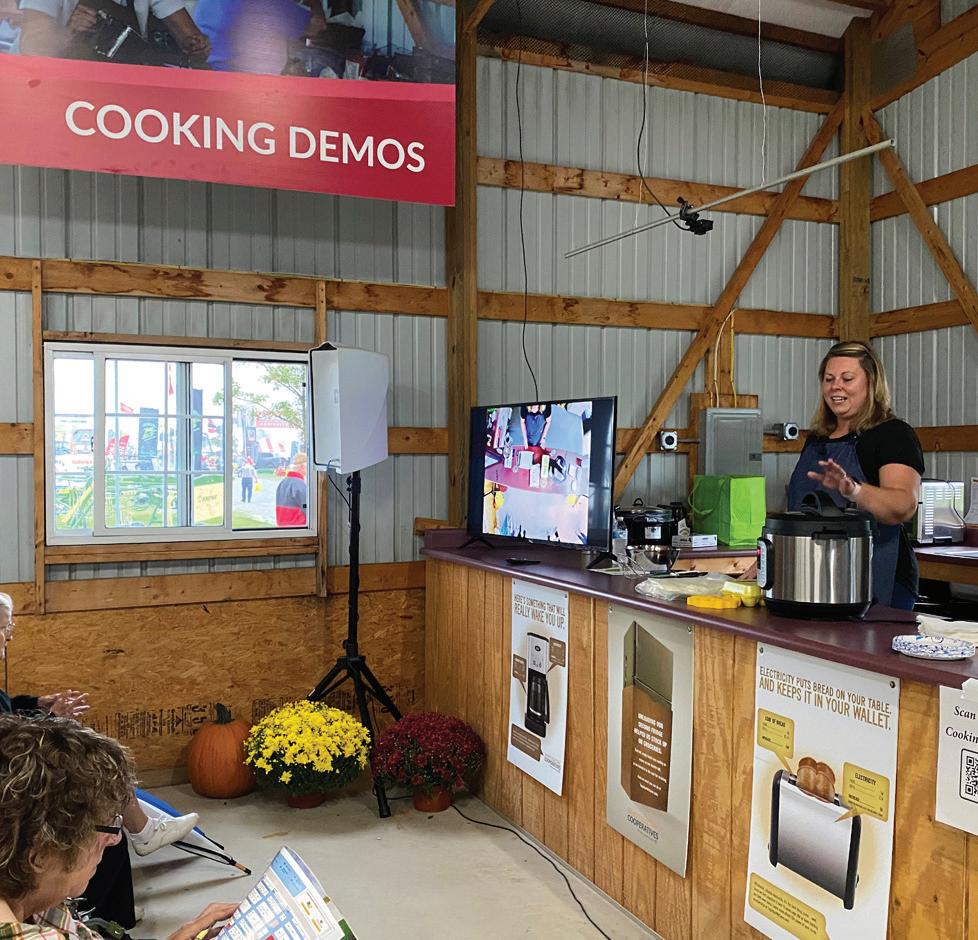






















































22 NEVER FORGOTTEN
A family and community slowly recover after a tragic accident on a Mercer County farm.

27 NATURE CALLS

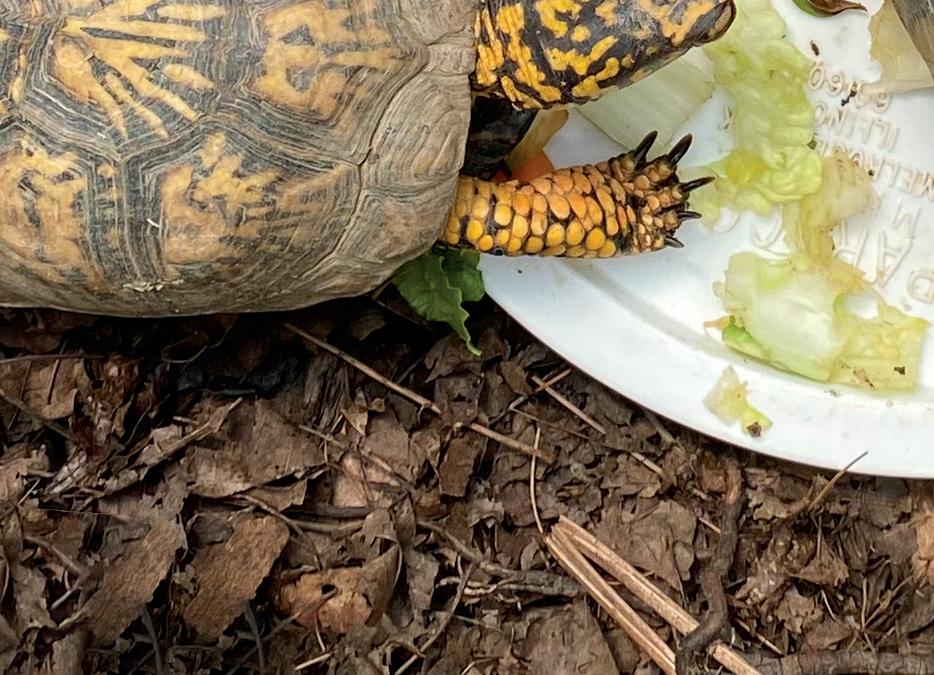

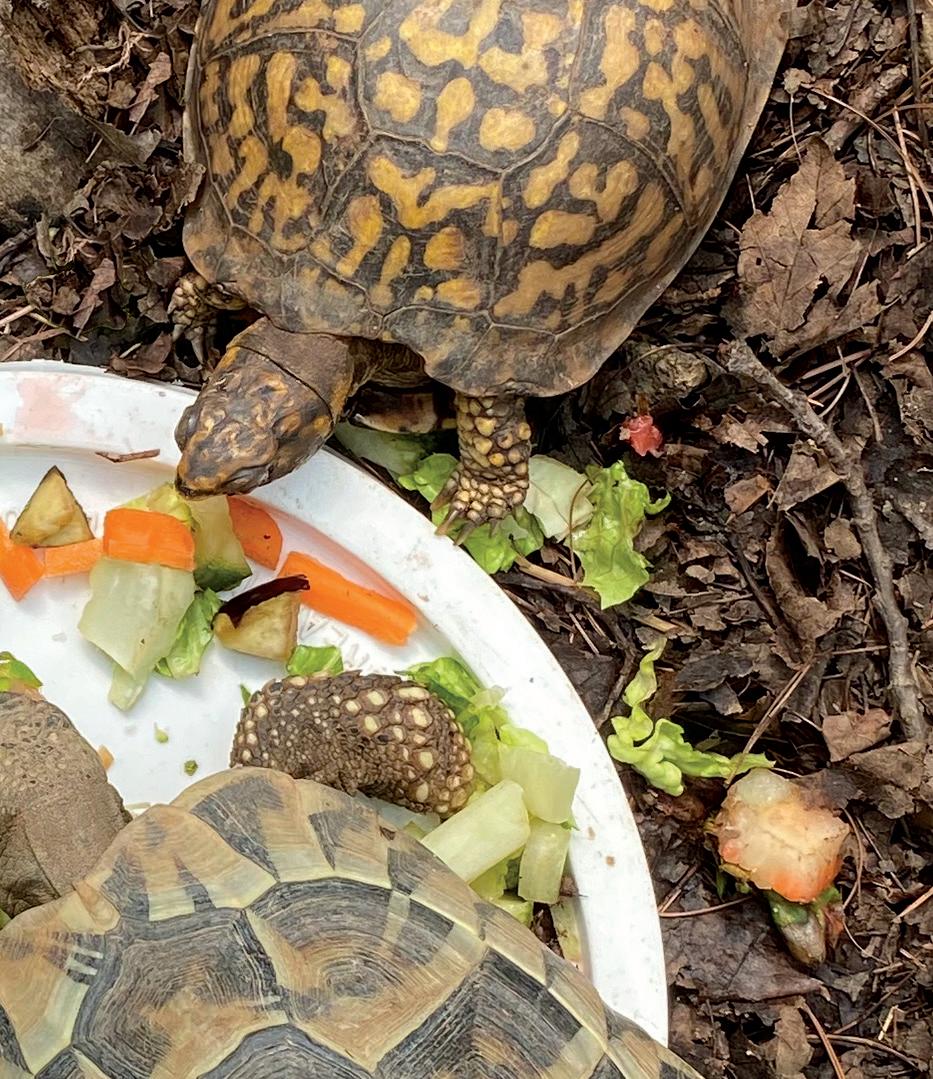

Beech Creek Gardens offers a multitude of sensory experiences in its 181 acres.
30 FRENCH CONNECTION
The influence of early colonization is still seen in pockets of Ohio.






When we think about the people keeping our lights on, most of us think of the lineworkers who build, maintain, and repair the power lines running through our communities. Behind the scenes, though, it takes another crew of dedicated men and women to keep that power flowing — and that’s something we can all appreciate as we sit in our air-conditioned homes during the hot and humid “dog days” of summer.
Buckeye Power, the generation cooperative founded by all of Ohio’s electric distribution cooperatives, owns and operates three large (and quite different) power plants that produce the electricity we consume. Nearly 300 people work at those plants to make sure we can put electricity onto the grid the instant it’s needed. Their roles vary, but their mission is very much the same: to produce electricity in a safe, reliable, cost-competitive, and environmentally responsible way. The plants are led by a pair of managers who bring all those roles together to accomplish that mission — a complicated task, to be sure. Check out our story on page 4 to get to know them a little better and maybe get a glimpse behind the curtain of our operations.

Much of the work at our power plants is the routine, day-to-day business of generating electricity: providing fuel, monitoring equipment, and ensuring that the plant’s environmental controls are working as designed. But we also put a lot of work into planning for the future. Certainly, we examine what will be needed next week, next month, and for the upcoming winter, but we’re also looking years into the future to plan repairs, replacements, and upgrades of the many complex systems it takes to operate these large-scale electric generators and their necessary supporting equipment.
It takes a multitude of people with an incredibly diverse set of skills to supply the power your co-op delivers to you, reliably providing affordable electricity at the exact moment you need it — whenever that may be. Everyone plays an important role, so I’ll use this opportunity to honor the dedicated power plant employees at our Cardinal, Mone, and Greenville facilities. Thanks, team!
Pat O’Loughlin PRESIDENT & CEO OHIO’S ELECTRIC COOPERATIVES
It takes a multitude of people with a diverse set of skills to supply the power your co-op delivers to you.
6677 Busch Blvd. Columbus, OH 43229 614-846-5757
www.ohiocoopliving.com

Patrick O’Loughlin President & CEO
Caryn Whitney Director of Communications
Jeff McCallister Managing Editor
Amy Howat Associate Editor
Crystal Pomeroy Graphic Designer
Contributors: Colleen Romick Clark, Randy Edwards, Michael A. Foley, Victoria Ellwood, Getty Images, W.H. “Chip” Gross, Catherine Murray, Damaine
Vonada, Kevin Williams, and Margie Wuebker.
OHIO COOPERATIVE LIVING (USPS 134-760; ISSN 2572-049X) is published monthly by Ohio Rural Electric Cooperatives, Inc. It is the official communication link between the electric cooperatives in Ohio and West Virginia and their members. Subscription cost for members ranges from $5.52 to $6.96 per year, paid from equity accruing to the member.
POSTMASTER: Send address changes to editorial and advertising offices at: 6677 Busch Boulevard, Columbus, OH 43229-1101. Periodicals postage paid at Pontiac, IL 61764, and at additional mailing offices. Nothing in this publication may be reproduced in any manner without written permission from Ohio Rural Electric Cooperatives, Inc. All rights reserved.
The fact that a product is advertised in Ohio Cooperative Living should not be taken as an endorsement. If you find an advertisement misleading or a product unsatisfactory, please notify us or the Ohio Attorney General’s Office, Consumer Protection Section, 30 E. Broad St., Columbus, OH 43215. Periodicals postage paid at Columbus, OH, and at additional mailing offices.
4 POWER LINES
Power brokers: The managers who oversee the generation of Ohio’s co-op electricity take their responsibility to heart.
8 WOODS, WATERS, AND WILDLIFE
Tastes like robin: The ubiquitous red-breasted songbirds, once considered a delicacy, were hunted nearly to the brink.


10 CO-OP PEOPLE

Past perfect: Slate Run Living Historical Farm perpetuates simpler life from a bygone era.

13 GOOD EATS

Pits top: Stone fruit might take a little extra work to prepare, but the reward is oh-so-sweet.

17 LOCAL PAGES
News and other important information from your electric cooperative.
33 CALENDAR
National/regional advertising inquiries, contact Cheryl Solomon
American MainStreet Publications
847-749-4875 | cheryl@amp.coop
Cooperative members: Please report changes of address to your electric cooperative. Ohio Cooperative Living staff cannot process address changes.
Alliance for Audited Media Member
8

10
What’s happening: August/ September events and other things to do around Ohio.


36 MEMBER INTERACTIVE
Vintage school days: Members take a look back at some happy childhood memories.

13
find content submitted by other co-op members across the state.


33
36
The managers who oversee the generation of Ohio co-op electricity take their responsibility to heart.







 BY RANDY EDWARDS
BY RANDY EDWARDS
Electric power is a service that is simultaneously deeply appreciated and yet taken for granted. We may feel a general sense of safety and comfort when the kitchen lights brighten a dark winter morning, when we feel the relief of an air-conditioned room on a sweltering summer afternoon, or when a shopkeeper switches on the security system at the end of the workday. It’s rare, though, that we give a thought to the source of that sense of well-being, and that’s an irony that David Richardson and Bethany Schunn have come to accept.
From opposite sides of Ohio, Schunn and Richardson manage the power plants that provide most of the electricity to the 25 electric distribution cooperatives served by Buckeye Power. About 1 million Ohioans depend on the reliable, affordable power they send to about 400,000 homes, farms, and businesses.
“We all take electricity for granted, until you’re at your own house and you lose it, and then you say, ‘Where’s the power company?’” laughs Schunn, plant manager for the Cardinal Power Plant in Brilliant, a small town on the Ohio River in eastern Ohio. Cardinal’s three coalburning units produce up to 1,800 megawatts of power at a given moment. It’s the main baseload generating plant for Buckeye Power.
About 250 miles to the west (and about 70 miles from one another), the Robert P. Mone Plant in Convoy and the Greenville Generating Station in Greenville are managed by Richardson. These natural-gas-burning facilities are “peaking plants” — fired up during periods of particularly high demand, or when other sources go offline.
The baseload plant and the “peakers” are vastly different in terms of how, when, and why they produce power. Their managers, likewise, have taken much different career paths to get to their current positions. Neither, however, considered the energy business as a career, starting out.
Schunn, 41, is originally from Wheeling, West Virginia, where her mother was in banking and her father was the sports editor at the local paper.
She planned to be a pharmacist, but after getting an undergraduate degree in chemistry, she began working as a laboratory chemist. That, in turn, led to a job at American Electric Power’s Conesville Power Plant near Coshocton. After working in the lab there for a while, she took over supervision of the equipment that removes sulfur dioxide from the plant’s emissions.
Along the way, she married, picked up a master’s degree in business, and had three children.
“I never thought, when I was in school, that I would work at a power plant, let alone make it a career,” she
says. “I didn’t even know they had a lab in a power plant. But it’s been so rewarding. You learn the process and you learn how you help people.”
After a dozen years with AEP, she had risen to the position of maintenance superintendent at Conesville when Buckeye Power hired her in 2017

Buckeye takes charge
AEP and Buckeye Power had always had a unique — and beneficial — relationship at Cardinal: The investor-owned AEP and member-owned Buckeye had split ownership of the units since the plant opened in 1967, and AEP, using its long history and expertise, operated the units on behalf of both entities from the beginning.
When AEP decided to abandon its generation business in Ohio, Buckeye Power agreed to take over operations and hired Schunn to help manage the transition. (Buckeye Power also bought AEP’s remaining stake in the generating units in 2022.) A few months after the transition was completed in March 2018, Schunn was promoted to plant manager when former manager Chuck George retired. With nearly 300 employees and power production happening 24 hours a day, seven days a week, Cardinal is a bustling industrial megalopolis on the banks of the Ohio River. About 25 trucks and eight river barges arrive daily, delivering the roughly 15,000 tons of Ohio, Pennsylvania, and West Virginia coal the plant typically burns over a 24-hour period. More trucks carry away the fly ash that’s produced as the coal burns, to be sold and made into concrete; and gypsum, a byproduct of the flue-gas desulphurization scrubbers, is loaded onto barges and taken away to produce wallboard.
That hustle and bustle is in sharp contrast to the peaker plants, which get their fuel delivered by underground gas lines, so few trucks go in and out. Also, unlike Cardinal, the Mone and Greenville plants typically don’t run 24/ 7, and instead are on constant standby to add power to the grid on a moment’s notice when the need arises. Their turbines are designed to be started quickly — in a matter of minutes — as soon as that call comes in, Richardson says. Between them, the two gas-fired plants host a total
of seven generating units and, combined, can produce up to 710 megawatts of electricity.

And they’re not as labor-intensive as a coal plant, either. Each peaking facility operates with a small staff of technicians who rotate their shifts between morning and evening. “Everything is automated here,” Richardson says. “Once we get the call to run and hit the start button, we can hit our max load of 50 to 60 megawatts per unit at Greenville in 15 minutes; at Mone, we can go from zero to 150 or 180 megawatts on each unit in less than 30 minutes.”
Though the peakers operate as needed, that does not mean “rarely.” The plants are in use between 100 and 150 days of the year, and sometimes, they are fired up several times in one day. When the turbines are not spinning, the small staff is maintaining the plant, keeping the units in top condition to be always at the ready.
Richardson and the teams at the peaker plants recognize that their power is often needed at unplanned and inconvenient times, and they take it in stride. “I’ve heard the guys say it: We’re like the fire department,” Richardson says. “We get called on when there’s an emergency, or when it’s extremely cold or extremely hot, and we know that if we can’t run, we’ll be hurting people. We all have that in the back of our heads.”
Richardson, 59, is a first-generation college graduate who lives just across the border in Indiana, with his wife of 37 years (the couple has two grown children). After earning an engineering degree from Purdue University, he worked in construction, in the petrochemical industry, and for other utilities before landing at Dayton Power & Light (now AES Ohio), which operated the Greenville plant at the time. His path to Buckeye Power, not unlike Schunn’s, involved the transfer of ownership and operation, in this case from
DP&L to AEP and, in 2018, to Buckeye. Having worked for investor-owned utilities, merchant plants, and electric cooperatives, Richardson says he prefers the co-op model.
“In an investor-owned utility, the CEO’s main job is to keep the stock price high and the investors happy,” he says. “At Buckeye, it’s all about the co-ops and their members. Our goals are to focus on safety, reliability, and affordability and to make sure our operations are environmentally sound.”
Both managers understand customers don’t think much about their electric power until something goes wrong — but that only increases their sense of mission and their pride in the teams they lead.
Last December, as many co-op families prepared for the holidays, a “bomb cyclone” hit much of the eastern U.S., bringing sub-zero cold and howling winds on Christmas Eve. As the deadly storm approached, PJM Interconnection (the regional transmission organization that coordinates grid reliability) called for every generating station in the system “to come online and provide as much output as they could,” Schunn recalls.
As Ohioans battened down the hatches and bundled up, the crews at Cardinal, Mone, and Greenville went into overdrive. “We ran 24/7 at both plants for at least a week,” Richardson says. “Nobody spent Christmas at home, that’s for sure.”
Schunn credits early seasonal winterization efforts by workers at Cardinal for the fact that the plant was able to operate at full capacity throughout the weather emergency.
“I was very proud of our team. First of all, it’s Christmas. No one wants to be working. And it’s cold as hell. But we were one of the very few plants (in the 13-state PJM network) that didn’t go offline or experience curtailments.
“That Christmas, they really needed us, and we were able to provide,” she says. “I’m really proud of that.”





Like millions of older Americans, I struggle with mobility. For years, I watched my quality of life slip away, as I was forced to stay home while friends and family took part in activities I’d once enjoyed. I thought I’d made some progress when I got a mobility scooter, but then I realized how hard it was to transport. Taking it apart and putting it back together was like doing a jigsaw puzzle. Once I had it disassembled, I had to try to put all of the pieces in the trunk of a car, go to wherever I was going, and repeat the process in reverse. Travel scooters were easier to transport, but they were uncomfortable and scary to drive, I always felt like I was ready to tip over. Then I found the So Lite® Scooter. Now there’s nothing that can hold me back.

Years of work by innovative engineers have resulted in a scooter that’s designed with seniors in mind. They created Electronic Stability Control (ESC) that makes it virtually impossible to tip over. If you try to turn too quickly, the scooter automatically slows down to prevent it from tipping over. The battery provides powerful energy at a fraction of the weight of most batteries. With its rugged yet lightweight
aluminum frame, the So Lite® Scooter is the most portable scooter ever—but it can hold up to 275 pounds—yet weighs only 40.8 pounds without the battery! What’s more, it easily folds up for storage in a car seat, trunk or even on an airplane. It folds in seconds without tools and is safe and reliable. Best of all, it’s designed with your safety in mind, from the newest technology and superior craftsmanship. Why spend another day letting your lack of mobility ruin your quality of life? Call now and find out how you can get a So Lite® Scooter of your very own.


Hunting earthworms on our lawns or building nests in our shrubbery, robins are so ubiquitous today that we barely give those attractive, redbreasted songbirds a second thought. But there was a time when they weren’t so common, and the reason is shocking: Robins were once hunted and eaten by humans.




The late 1800s and early 1900s was the era of the market hunter in America. With few laws yet in place to protect wildlife, anything and everything was fair game. Any wild animal that could be killed and sold for profit was in jeopardy.
The slaughter began with large mammals — elk and deer in the East, bison in the West. Once those populations were decimated, the professional hunters moved on to

waterfowl: ducks, geese, and swans. After those species were depleted, shorebirds were next in line. Smaller than most waterfowl, shorebirds made up for their small size by numbering in the millions. They also decoyed readily and tasted good on the dinner table.
Last on the list was songbirds.



It was not just country folk who consumed songbirds. Big-city gourmands enjoyed noshing on them, too, and robins were at the top of their list. In fact, the American robin became the standard against which most other small birds were measured, gastronomically speaking.


In 1867, a New York butcher named Thomas F. DeVoe authored The Market Assistant: A Brief Description of Every Article of Human Food Sold in the Public Markets of New York, Boston, Philadelphia, and Brooklyn.

The ubiquitous red-breasted songbirds, once considered a delicacy, were hunted nearly to the brink.
In his treatise, DeVoe devoted a portion to songbirds, opining that blue jays, for example, were tasty, but “not so well flavored as the robin.” He also said that the highhole (known today as the Northern flicker) was “not so tender as the robin.”
DeVoe went on to add that “large numbers of [robins] are found in our markets, and thousands are also shot by sportsmen in the months of September and October, when they are fat and delicate eating.”
In the 20th century, both subsistence hunters and market hunters plied their trades in some Southern states, where wintering robins gathered by the hundreds of thousands in nighttime roosts. Working in teams, one person with a torch would climb a tall tree while others on the ground with clubs and long poles startled the roosting birds into flight. Drawn to the torch’s light shining near the top of the tree, robins were grabbed by hand, killed, and shoved into a sack. One team could bag 300 to 400 robins per night, and with as many as 100 or more hunters with torches and clubs at work in a given spot, robins were killed by the wagonload.
Robin hunting became so pervasive throughout the South, where some states had declared the species a gamebird, that the National Association of Audubon Societies (today known as the National Audubon Society) finally stepped in. The organization worked with teachers in the region to create grade-school clubs encouraging “sympathy for birds.” That effort eventually became the successful Junior Audubon program.
What ultimately ended the commercialization of robins and other songbirds was the passage of the federal Migratory Bird Treaty Act in 1918. The new law was somewhat misleading in its title, as it protected all native North American birds with the exception of nonmigratory gamebirds (the sport hunting of which today is still regulated by state wildlife agencies).
The good news is that robin populations have since recovered and are once again healthy and flourishing. “The best way to realize how abundant they are is to listen to the spring and summer dawn chorus, when most birds are in full voice,” said Jim McCormac, author of the field guide Birds of Ohio. “American robins generally greatly outnumber all other singers.”
Ohio’s most well-known market hunter was a rather diminutive young woman from Darke County who shot bobwhite quail and other birds on the wing, which she sold to upscale restaurants in the Cincinnati area to help support her struggling family. Her name was Phoebe Ann Mosey, but she was better known by her pseudonym, Annie Oakley (1860–1926).

W.H. “Chip” Gross is Ohio Cooperative Living’s outdoors editor. Email him with your outdoors questions at whchipgross@gmail.com. Be sure to include “Ask Chip” in the subject of the email. Your question may be answered on www.ohiocoopliving.com!
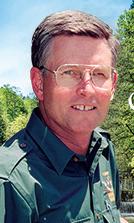
www.ohiocoopliving.com








 STORY AND PHOTOS BY DAMAINE VONADA
STORY AND PHOTOS BY DAMAINE VONADA


“Where do the batteries go?” Ann Culek always smiles when she recalls the curious little boy who couldn’t figure out the workings of an oldfashioned marble run one afternoon in the farmhouse at Slate Run Living Historical Farm. Culek, the site’s program manager, patiently explained to him that in the 19th century, toys did not have batteries.
“At Slate Run farm,” she says, “everything we do is about recreating what life was like on an Ohio farm in the 1880s.”


Operated by Columbus and Franklin County Metro Parks, the farm is part of Slate Run Metro Park, situated in the splendidly scenic countryside between Circleville and Canal Winchester. It’s a South Central Power Company member, but because the farm preserves the lifestyle of an era before electric cooperatives served rural Ohio, visitors never see so much as a light switch, let alone the modern office equipment that occupies the farmhouse’s second story.
Instead, they experience a bygone time by watching a historic interpreter in period costume strike a match to light an oil lamp; by smelling smoke from the woodstove in the kitchen where another interpreter is baking cornbread for dinner; by tasting heirloom apples freshly picked in the orchard; by touching just-laid chicken eggs that still feel warm; and by hearing the incessant clatter of a threshing machine powered by the brawny team of Percheron horses named Marcus and Bob.
“Slate Run farm’s staff is willing to do things the hard way and to do the research needed to accurately present the past to the public,” Culek says. “Almost everyone working here has a background in education, history, or science education.”
Located on land that has been farmed since 1805, Slate Run is on the National Register of Historic Places, and its buildings are typical of a late 1800s farmstead. The Gothic Revival-style farmhouse was constructed in 1856, but its furnishings — which include a square piano and a stereoscope in the parlor — epitomize middle-class Ohio households circa 1880. “The 1880s were a heyday for Ohio because the state was an agricultural, industrial, and political power,” Culek says. “Ohio’s Rutherford Hayes was elected president in 1876, followed by another Ohioan, James Garfield, in 1880.”
By the 1880s, canals and railroads also had tied Ohio agriculture to the market economy, and during that decade, Samuel Oman and his wife, Mary, lived and worked on the land that became Slate Run farm. “We know from agricultural census records that the Omans annually shipped about 600 pounds of butter to Columbus and raised three litters of hogs that they sent to Cincinnati,” Culek says. In addition, the Omans constructed the red, cupola-topped barn, which is still in use at Slate Run, in 1881. The barn has hand-hewn beams and mortise-and-tenon joinery, and the Omans built it big enough for housing livestock, stockpiling straw and hay, and storing the equipment needed to grow oats, wheat, and other crops.
Because of Slate Run’s emphasis on authenticity, all its animals and plants were common on Ohio farms during the 1880s. That’s why you’ll see heritage breeds such as Merino sheep, which were prized for their fine wool, grazing in the pastures; brown Buckeye chickens, which provided meat as well as eggs, pecking in the poultry yards; and fat Poland China hogs, which were developed in southwest Ohio in the 1840s, wallowing outside the hog shed. Since farm families once used Poland China lard for everything from cooking to greasing their shoes, Slate Run’s educational programming even includes a hands-on laundry day that includes pig fat. People get to help the farm wife by scrubbing clothes on a wooden washboard, and they see how farm families made their own soap from lard and lye.
Understanding that doing the laundry once meant spending an entire day bent over a washtub is only one of the lessons that Slate Run teaches about farm life before electricity, mechanization, and indoor plumbing. By working the hand pump in the farmhouse yard, visitors learn that getting water was once quite a chore. The root cellar illustrates how families like the Omans kept carrots, turnips, and beets in sawdust because they had no refrigerators or freezers. And since the farmhouse lacked air conditioning, they habitually tried to beat the heat by disassembling the cookstove and moving it into the summer kitchen — a separate structure where Slate Run interpreters now
demonstrate how farm wives managed to feed their families year-round by preserving vegetables, pickles, and jams in glass jars.
A visit to Slate Run also helps develop an appreciation for how the everyday rhythms and routines of farming vary with the seasons. As a result, says Culek, “People tell us that no matter how many times they come here, they always find something different or new.”
For example, those who visit in the spring will see frisky piglets that were born on the farm; by summer, those same piglets will have grown portly and enjoy a snooze in the shade, and in December, they’re hanging in the smokehouse. Both guided and self-guided tours of the farm are available, and since admission is free and there’s no gift shop, visitors never have to stand in a line or open their wallets to journey into yesteryear.

“There is nothing for sale,” Culek says.
“This is a place for families to step back and enjoy time together; to play on a rope swing or try walking on stilts; and to discover the past.”
Slate Run Historical Farm, 1375 State Route 674, Canal Winchester, OH 43110. Open 9 a.m.–6 p.m. Tuesday, Wednesday, Thursday, and Sunday and 9 a.m.–7 p.m. Friday and Saturday from April 1 to Sept. 30; hours change for fall and winter, and some activities are limited and buildings closed from January through March (check website for details). 614-833-1880; www.metroparks.net/parksand-trails/slate-run-historical-farm.




We know you are seeking new ideas to gain an edge and ensure your business thrives. Ohio Farm Bureau is evolving and growing to meet your needs with insights and business solutions to help grow your bottom line and stay a step ahead. Feeding your need for new ideas.










Drunken cherries add a special punch of flavor to ice cream, pound cake, rice pudding, pavlovas, and hot chocolate. (Shown over vanilla ice cream with toasted pecans and shaved dark chocolate.)






Prep: 15 minutes | Cook: 5 minutes | Servings: 8
1 cup brandy, bourbon, or spiced rum (medium- or low-cost)
1⁄3 cup sugar


1½ cups fresh sweet cherries

In a small saucepan, simmer alcohol and sugar, stirring over low heat until sugar has fully dissolved. Turn off heat and let sit 15 minutes. Wash, pit, and de-stem cherries. Pack cherries into a 16-ounce Mason jar. Pour syrup over cherries, making sure they’re fully submerged. Cover with lid and ring and let cool to room temperature, then store in fridge for up to a year. Soak overnight at a minimum before eating; a few weeks or longer is optimum. Per serving: 122 calories, 0 grams fat, 0 milligrams cholesterol, 0 milligrams sodium, 13 grams total carbohydrates, 0.5 gram fiber, 0 grams protein.


Stone fruit might take a little extra work, but the reward is oh-so-sweet.
Prep: 15 minutes | Servings: 4
2 fresh mangos, cubed
¼ cup olive oil

1 handful cilantro
1 lime, juiced
3 tablespoons honey
3 tablespoons

minced red onion
¼ teaspoon salt




¼ teaspoon pepper


1 large avocado, sliced
1 pint cherry tomatoes, halved
7 ounces arugula
With a blender, immersion blender, or food processor, puree ¼ cup of the cubed mango along with olive oil, cilantro, lime, honey, red onion, salt, and pepper for dressing and set aside. Make a bed of arugula and layer remaining salad ingredients on top. Drizzle with dressing and serve.

Per serving: 391 calories, 21 grams fat (4 grams saturated fat), 0 milligrams cholesterol, 174 milligrams sodium, 55 grams total carbohydrates, 12 grams fiber, 6 grams protein.
Have you tried one of our recipes? Do you have a recipe to share with other Ohio co-op members? Visit the Member Interactive page on www.ohiocoopliving.com to find recipes submitted by our readers and to upload yours.
www.ohiocoopliving.com
While you’re there, check out a video of a few of our recipes being prepared.
Prep: 30 minutes | Bake: 40 minutes | Servings: 6
1½ cups flour
5 tablespoons brown sugar, divided *
½ cup salted butter, cold, sliced thinly
6 tablespoons ice cold water
1 pound ripe peaches
½ pound ripe apricots (or plums)
1 tablespoon lemon juice
1 tablespoon cornstarch *
1 egg, lightly whisked (optional)
* Any ratio of peaches, apricots, and/or plums will work in this recipe, but you may need to adjust cornstarch and sugar amounts. Taste to get a sense of how tart and juicy they are and use more sugar if the mixture is extra-tart and more cornstarch if it’s extra-juicy.
With your hands, lightly combine flour, 3 tablespoons brown sugar, and butter until it resembles crumbles. Using your hands, mix a tablespoon of water into dough until it begins to form and stick together. Dust a flat surface with flour. Roll out dough to 1/8-inch thick in an oval shape. Transfer to a baking sheet. (If room temperature is above 75 F, you may want to pop the dough in the fridge while you work on the next step.)
Preheat oven to 400 F. Slice peaches and/or plums into wedges lengthwise and apricots in half lengthwise. Toss in a bowl with lemon juice, the remaining 2 tablespoons brown sugar, and cornstarch. Fill center of dough with fruit, leaving a wide rim of dough uncovered around the edge. Fold sides of dough up over the fruit, leaving the center open. Brush dough with egg wash (optional) and bake 30 to 40 minutes, or until pastry is golden and fruit is bubbling and beginning to wrinkle. Let cool, slice, and serve.

Per serving: 322 calories, 17 grams fat (10 grams saturated fat), 68 milligrams cholesterol, 123 milligrams sodium, 39 grams total carbohydrates, 2 grams fiber, 5 grams protein.

Prep: 15 minutes | Bake: 50 to 60 minutes | Servings: 6
1 cup packed brown sugar, divided
½ cup milk
½ cup dates, finely chopped
½ cup prunes (dried plums), finely chopped
1 cup flour
1 teaspoon baking powder
1 teaspoon allspice
¾ cup coarsely chopped pecans and/or walnuts
½ cup white sugar
1 teaspoon salt
1 tablespoon vanilla
1½ cups boiling water whipped cream (optional)
In a medium bowl, mix ½ cup of the brown sugar into milk, then add the chopped dates and prunes. In a small bowl, mix flour, baking powder, and allspice, then incorporate into fruit mixture. Spread evenly into the bottom of an ungreased 9-inch square baking dish and sprinkle nuts on top.
In the now-empty medium bowl, combine remaining ½ cup brown sugar with white sugar and salt. Mix vanilla and boiling water into sugar mixture until sugar is dissolved. Pour mixture over the nuts. Bake at 350 F for 50 to 60 minutes, until bubbly and slightly jiggly. Let cool for 10 minutes before serving. Top with whipped cream, if desired. Store leftovers in the refrigerator and reheat in microwave.
Per serving: 375 calories, 5.5 grams fat (0.5 gram saturated fat), 2 milligrams cholesterol, 406 milligrams sodium, 79 grams total carbohydrates, 3 grams fiber, 5 grams protein.















Geothermal heat pumps circulate water underground to provide the ultimate in energy-efficient heating and air conditioning. Radiant systems circulate water throughout your floors to provide the ultimate in luxurious comfort. WaterFurnace’s new HydroLogic radiant panel married to our 5 Series OptiHeat unit is simply the easiest way to combine the two worlds. You’ll love your warm, toasty floors—and you’ll adore your utility bill. Contact your local WaterFurnace dealer today to learn more.










Over the past two months, I and other cooperative leaders in Ohio engaged our elected leaders at the Ohio Statehouse and in Washington, D.C., to discuss our concerns over power reliability and the impact it will have on our communities.
I know you rely on the power we provide, 24/ 7, 365 days a year — our lives, and livelihoods, depend on it. For the first time since neighbors came together to form this cooperative in 1936, the reliability of power is at risk.
Your cooperative jointly owns Buckeye Power with the rest of the cooperatives in Ohio, which generates enough power for all 400,000 members of Ohio’s electric cooperatives. Through this arrangement, we have successfully planned for, and provided, enough power generation to meet the needs of our members. However, we depend on the larger grid to balance supply and demand for electricity. Your cooperative works hard every day to ensure the local delivery system is reliable through planned maintenance programs and responsive service to local power outages.
Yet, despite our efforts, our capability to deliver reliable power to you is now at risk, and here’s why:
• Demand for electricity is higher than ever, especially during extreme cold and hot weather, and with the growing electrification of our transportation network.
• The supply of reliable electricity is down due to the rapid retirement of coal and nuclear plants. In 2009, Ohio had 21 coal plants. By the end of 2023, just four will remain in operation. Intermittent sources such as wind and solar power have come online but haven’t filled the gap, and aren’t reliable 24/ 7, 365
• Overreaching and unreasonable environmental regulations that result in unnecessarily high costs and provide only minimal environmental benefits.
• Poorly designed electricity market rules that undercompensate reliable baseload power plants that provide steady, controllable output, while over-compensating less reliable, intermittent sources.
• Unreasonable goals and time frames to achieve greater reductions in carbon emissions from electricity providers, even though the U.S. electric sector has cut CO2 emissions by 36% since 2005 while producing nearly 5% more electricity.
• Supply chain challenges have resulted in unreasonable lead times on obtaining new transformers, wire, and line trucks we use for local service.





 Ed VanHoose PRESIDENT/CEO
Ed VanHoose PRESIDENT/CEO

Organizations charged with ensuring a reliable electric grid (North American Electric Reliability Corporation, nerc.com) and (PJM Interconnection, pjm.com), which manages Ohio’s grid, have each published reports of concerning trends causing increased reliability risks. They point out rolling blackouts, like those experienced in Texas, California, and nine Midwest states, and threatened in Ohio in December 2023, are inevitable without an immediate change in energy policy.
For 87 years, the mission of your cooperative has been to deliver reliable, safe, environmentally responsible electricity at stable and affordable rates, to the member-owners of the local communities we serve — our commitment has never wavered but is being challenged because of poorly conceived and harmful energy policies. Please help us carry the message to our state and local elected leaders that you support commonsense energy policy.
The June board meeting occurred later than usual this month; therefore, the “Board Highlights” section for June will appear in September’s magazine.





North Central Electric’s 87th annual meeting was held virtually for the fourth year in a row. Hundreds of members attended either by phone or computer on June 13
Attorney Brent Howard presented the election results. Districts 1, 2, and 3 had an uncontested election, making Kevin Bishop your director representing District 1, Dennis Schindler your director representing District 2, and Nick Wagner your director representing District 3 In this year’s election, the membership voted on changes to the Code of Regulations. The election was conducted by Co-op Ballot, an independent, third-party balloting provider. Co-op Ballot certified that all five issues passed.
Board Chair Rodney Snavely gave an update on the headquarters building project. The project began in May 2022, and the construction work is coming to a close as employees operate under a temporary occupancy permit while waiting for the final components necessary to open the building to the public. He thanked the members who actively participate in Operation Round Up/People Fund. “The People Fund remains dedicated to giving our members and communities the extra helping hand we all may sometimes need,” he said.
Snavely also updated members about the member advisory committee group, which kicked off in 2022. This committee consists of nine to 18 total members (up to two per district) and meets twice a year to learn about electric issues, receive education about cooperative policy and procedures, and help to inform members at large about services and events related to the operations and management of the co-op. For more information about the committee, contact the cooperative at 419-426-3072
Pat O’Loughlin, president and CEO of Ohio’s Electric Cooperatives (OEC), took a look back on 2022 and all the challenges that it brought, including volatility in fuel prices, high inflation, supply chain disruptions, long lead times for electrical equipment, and severe weather events that caused widespread grid disruptions. Nonetheless, he praised Ohio’s 24 electric cooperatives for their performance at keeping the lights on, making repairs when outages did occur, and holding cost increases to a minimum. O’Loughlin touched on topics like environmental regulations, market rules, unreasonable goals and timelines to achieve greater reductions in carbon emissions, the continued need for coal, the impact of grid reliability, and much more.
NCE President/CEO Ed VanHoose congratulated the 2023 scholarship winners and encouraged all graduating seniors who are children of NCE members to apply for these scholarships.
VanHoose briefly talked about the headquarters project and the delays affecting the co-op's ability to open the building to the public, as well as the community center and its availability in the future.
Next, he touched on the impact of the current state of the economy and how generation, transmission, and fuel costs, supply chain issues, and labor shortages affect your cooperative. He spoke about the potential for NCE to see rolling blackouts depending on the weather and the availability of generation resources.
“Where does that leave us for the future?” VanHoose asked. “Well, it leaves a lot of uncertainty, leaves a lot of volatility, and it leaves me saying something that I have never said in my 20 years running an electric cooperative. And that is that I think its time for us all to consider buying personal generators for your own house to help offset when these types of events could potentially happen.”
He also encouraged members to do some research and be prepared for the supply chain issues that are going to be inevitable when members start to try to get personal generators.
Finally, VanHoose updated members about two types of broadband. The first use of broadband is internet access for members’ homes. NCE is not offering this as a service, but instead has collaborated with Bascom Communications to help build out and offer broadband service to NCE members in Seneca County. Look for some announcements that will be coming in the following months.
The second use for broadband is within the electric industry. This broadband network will allow NCE to have the ability to automate switching between substations if a transmission line is down. By utilizing fiber, NCE can reroute the power to keep the lights on for members. Beginning next year, the co-op plans to develop the technology roadmap using this new communication backbone that will enable us to provide advanced metering infrastructure as well as some smart home capabilities to all members.
Miss the meeting? View a recording on the co-op's page here: www.ncelec.org/annual-meeting.






On the evening of Thursday, June 15, multiple severe thunderstorms popped up all across northern Ohio. At the ready were the hundreds of lineworkers, operations teams, and their support crews ready to travel and work wherever they were needed at any of the affected co-ops in Ohio.





At North Central Electric, crews were waiting to see where the electrical infrastructure was damaged and ready to go out to make repairs to keep the lights on for co-op members. Little did they realize when the storms began that another co-op would need assistance.
One of NCE’s seven guiding principles is Cooperation Among Cooperatives. Co-ops serve their members most effectively and strengthen the cooperative movement by working together through local, national, regional, and international structures. So, when another co-op calls for help, we answer.
After confirming all was good with NCE members, Paul Weaver, Clint Wurm, Evan Cordell, Curt Reiter, Andy Ru ng, Dylan Cornwell, Dan Reer, and Andrew Willman volunteered to help Firelands Electric Cooperative, located in New London, Ohio, and servicing members in Ashland, Huron, Lorain, and Richland counties.
These two crews, along with two bucket trucks and two digger trucks, headed out at 7 a.m. on June 16 to assist their sister co-op.
After multiple EF2 tornadoes (defined as having 3-second gusts of 111 to 135 mph winds) on their system, Firelands was left with more than 5,000 members without power, 30 broken poles, and several full lines down.







Within 48 hours, crews from Firelands, NCE, and other co-ops were able to restore all the damage and get power back to all members.
This is the power of the co-op, a not-for-profit model that focuses on its members.



Capital credits reallocation notice




Names published here are appearing on the unclaimed capital credits list for the first time. The complete list of current and former members who have unclaimed capital credits with the cooperative is posted on the cooperative’s website, www.ncelec.org/capital-credits-unclaimed-funds-list
The cooperative is aware that many of the former members listed may be deceased. However, we are looking for surviving family members who are eligible to receive the capital credits checks. Due to federal privacy regulations known as “red flag rules,” the cooperative can only provide account information to the member, surviving spouse, or a legally documented fiduciary (executor or trustee).
If you meet these criteria, please complete the application form below and forward it to our o ce with your letter of authority and a copy of the death certificate.
Due to federal “red flag rules” that protect against identity theft, heirs must submit a photocopy of the member’s death certificate along with a letter of authority to show they are the person authorized to receive the funds from the capital credits account. Please note a power of attorney agreement is not acceptable because it is void upon death. If there is no individual qualified to act on behalf of the member, please advise in writing. Once North Central has received the information, the cooperative will forward the application for completion. Send information to:
North Central Electric Cooperative Attn: Capital Credits, P.O. Box 475 Attica, OH 44807
Name from list:
Executor name:












The easiest way to submit a change of address is to access the cooperative’s website at www.ncelec.org/capital-credits-change-address. If you do not have access to a computer, use the form below. Due to current “red flag rules” that protect your privacy, updates must be submitted in writing or electronically through the cooperative’s website. No phone calls, please. Once North Central Electric has received the information, the cooperative will forward the refund to the address provided. Send information to:
North Central Electric Cooperative Attn: Capital Credits, P.O. Box 475 Attica, OH 44807
Name from list:

Account/member #:

Mailing address:
NORTH CENTRAL ELECTRIC COOPERATIVE LOCAL PAGES 18B OHIO COOPERATIVE LIVING • AUGUST 2023

AARON G HENSLEY
AARON J GARZA
ABIGAIL L DAYTON
ADAH F FAUSNAUGH
ADRIAN A ROSZMAN
ADRIENA M SMITH
AERIEL G COOK
ALAN PERRY


ALAN RIDDLEBAUGH
ALAN W SMITH
ALBERT LEUTHOLD
ALEXIS N CHUMLEY
ALICE M RAPP
ALMA BERRY
AMANDA M PENNOCK
AMELIA NAVA
AMY J TRACY
AMY R MARKS
ANDREA M DAVIS
ANDREW A SCHOEN
ANDREW N FOX
ANDREW R PARKER
ANDREW S CLOUSE
ANGELA M SULLIVAN
ANGELA S HOLEMAN
ANITA J JOHNSON
ANNA M BILES
ANNA RUFFING
ANNABEA HEILMAN
ANNETTE M LIEB
ANTHONY J PECK
ANTHONY L MOLER
ARTHUR DIAZ
ARTHUR HIEBER
ARTHUR L MAINES
ASHLEY B SWANN
AUDREY H SMITH
B RAY HALL
BARB BRADLEY
BARBARA M ELEY
BARBARA TAYLOR
BARRY J DAWSON
BEATRICE A SPRINGER
BEATRICE A SPRINGER
BERNARD F KLOPFENSTEIN
BESSIE HANING
BETSY AIKMAN
BETTE A KIDD
BETTY NELSON
BIGLER BROTHERS
BILL E LEE
BILLY J DEUBLE
BONNIE DANIEL
BOR-DEL FARMING
BRADLEY A WALTON
BRADLEY D KELBLEY
BRADY N BISHOP
BREE M DENTINGER
BRENDA A VARGAS
BRENDA FEATHERINGILL
BRENDA R TUTTLE
BRENDA RILEY
BRENT K WILBER
BRENT STINE
BRETT A BOLLINGER
BRETT BENDER
BRIAN S SULLIVAN
BRIANNE M MANGUS
BRITTNEY L SEARLES
BROCK C CLEVELAND
BRYAN E LAWRENCE
BRYAN J RIEDLINGER
BRYAN K TRUMBO
C C PRICE JR
CAMILLE L WILSON
CANDY L CLARK
CANDY MCDANNELL
CARL F BOEHM
CARL HODGE
CARL T CARTER
CARL W BROOKER
CAROL S DEVAUGHN
CATHERINE E HUSTON
CELERYVILLE CONSERVANCY
CHAD E LUZADER
CHAD R EBERHARDT
CHARLES A BLACK III
CHARLES A SCHERGER
CHARLES F FRANKART
CHARLES KIESS
CHARLES L DUNCAN
CHARLES L HUMBERT
CHARLES R RHODES III
CHARLES W CAVEY
CHELSIE M MORROW
CHESTER A SMITH
CHRIS A BOLTZ
CHRIS DUNLAP
CHRIS KOPF
CHRIS O’FLAHERTY
CHRISTIAN E FELTY
CHRISTINE K SAUM
CHRISTINE M DALE
CHRISTINE RIST
CHRISTOPHER J GILBERT
CLARA E NASH
CLARENCE OUSLEY
CLARENCE WALTON
CLARK & SONS LLC








CLAY H SNYDER

CLIFFORD E WHEELER
CLINT KLASEN
CLINTON ATHLETIC BOOSTERS
CLYDE M WENTLING
COLDWELL BANKER
REALTY PLUS




COLDWELL BANKER


TRI-PRO REALTY

COLTON J COURTERFIELD
COLUMBIA GAS TRANS
CONNIE E PENWELL

CONNIE LEETH
CONNIE PENWELL
CONSTANCE E KOMAREK
CRAIG A MILLER
CRYSTAL LAWRENCE
CSX TRANSPORTATION
CURTIS D MILUM
CYNTHIA L BRUBAKER
DALE A STEARNS
DALTON SCHAAF
DAN CUTCHALL
DAN J ALLEN
DAN J NIESE
DANIEL FALTER
DANIEL G WEIKER
DANIEL HAFFA
DANIEL J REINHART
DANIEL L BATESON
DANIEL L HEYDINGER
DANIEL S KING
DANIELLE L PATTON
DANNIE RAMEY
DARLENE RICKENS
DAROLD NOE
DAVID A MILLER
DAVID A WEITHMAN
DAVID A WILLIAMS
DAVID D CAUDILL
DAVID E SWEENEY
DAVID G WILFER
DAVID L HISEY
DAVID L QUICK
DAVID RICE
DAVID W SAYRE
DAWN E SADLER
DAWN L CARULLI
DAWN M SMITH
DEANNA M PAHL
DEBBRA ALABAUGH
DEBRA A SCHACHER
DEBRA J ROHRBACHER
DENCIL L SAYRE
DENNIS SHERMAN
DENNIS VANHOOSIER
DIANA SWARTZ
DOLLY A WHEELER
DONALD E SAYRE
DONALD J HESS
DONALD L WARD

ETTA J MEISNER
EUGENE B SCHUBERT
EUGENE C CHANCEY JR
EUGENE P HART
EVIE CASE
FARM TROUT


DONALD R GOTTFRIED
DONNA FITTRO
DONOVAN R
MEWHORTER
DONOVAN WENTLING
DOROTHY B SMITH
DOROTHY M EARL
DOUGLAS A HANCOCK
DOUGLAS A MILLER
DOUGLAS C STEELE
DOUGLAS L MORROW
DYLAN E NOTHACKER
EARL W WILSON
EASTER E EVERETTS
EDL FARMS LTD
EDMUND OTTE
EDNA C WEILAND
EDWARD CARTER
EDWARD J EIGEL
EDWARD L MILLER
EDWARD STROUB
EDWARD T STORY
EDWARD WHITE
EDWIN A MARTIN
ELDON E HORNER
ELDON HORNER
ELISE COGAR
ELLEN S BOSWORTH
EMELIA J SANFORD
ERIC R MCCLELLAN
ERIE CO CABLEVISION INC
ERIN E MANLEY
ERMA F MCGRAIN
ERNEST RUSSELL
ESAIAS MALAGON
ETHAN A KOOP
FAS-AHM UTILITIES LLC


FIFTH THIRD BANK
FIRST BAPTIST CHURCH
FLOYD PENWELL
FOSTORIA ECONOMIC
FOSTORIA ECONOMIC
FRANCIS SCHMIDT
FRANK SMITH
FRONTIER COMM INC, SITE 1607
GALEN GOODING
GARRICK E MANNING
GARRY L SALMONS
GARY A FABER
GARY L RUTTER
GARY L STEWART
GAVIN E MANNING
GAYLORD R TRAUTMAN JR
GEOFFREY PHILLIPS
GEORGE E LOVE
GEORGE GATCHELL
GEORGE MARTIN JR
GEORGE PEACOCK
GERALD L PERRY
GLENN C SKIDGELL
GLORIANN E PIETILA
GRAYDON A SNYDER
H R KUHN
HAROLD A TOSH
HARRIET N MAGERS
HARRY C STIGER JR
HARRY LOSEY
HELEN J CRONAU
HOPEWELL ESTATES LLC
HOWARD HANNA
IDA M SPEESSEN
IDONA C ROHRBACHER
INNOTION ENTERPRISES INC













IRENE TRIPLETT
IRVIN REINHART
J M SMUCKER CO
J P MCNERNEY
JACK NYE
JACKIE A LEDDICK
JACOB BIDDLE
JAKE MARSILLETT
JAMES A KEAR
JAMES A SCHOENBERGER
JAMES C SIEGER
JAMES E EISENHOWER
JAMES E PAINTER
JAMES F HART
JAMES FREDRITZ
JAMES H KIDD
JAMES J KINN
JAMES L BARBER
JAMES L SCOTT
JAMES M LOWERY
JAMES MURRAY
JAMES N CAMPAIN
JAMES N SPARKS II
JAMES P KELLEY
JAMES T WAGNER
JAMES W BROWNING
JAMIE A SHERK
JAMIE J BENNER
JANE NICHOLS
JANET A BAILEY
JANET CRAFT
JANET G GILLIG
JANET G GILLIG
JANET M SAULL
JANETTE R CHAFFINS
JANICE LEWIS
JARED D CASE
JASON B WOODRUFF
JASON BRINKSNEADER
JASON E SNODGRASS
JEAN A GRASLEY
JEAN BECKFORD
JEAN FOX
JEAN R LONSWAY
JEANETTE K MACBETH
JEANNE CURLIS
JEFF A MCCOY
JEFF D BORKOWSKI
JEFFERY JACOBS
JEFFERY W HISER
JEFFREY J MANGUS
JEFFREY M FROST
JEFFREY WORKMAN
JENNI R HAYMAN
JENNIFER L REINHART
JENNIFER LEETH
JENNIFER LEETH
JENNIFER R WALTER
JENNIFER SPOORES


JERIMY W HERR
JERRY L FLEMING JR
JESSICA C GAIETTO
JESSICA L BEAVERS
JESSICA L GODDARD
JIMMY R PERKINS
JOAN GUNDER
JOAN ROTH
JODI A RENWAND
JODI L WALSH
JODY R LEUTHOLD
JOE P SOWERS
JOE WILLIAM CAHILL
JOHN AMERT
JOHN BIGLER
JOHN C NICKEL
JOHN C SCHIRACK
JOHN E BROWN
JOHN E LAUDICK
JOHN E ZORNES
JOHN KEESEY



JOHN MCCLISH
JOHN MCCONNELL
JOHN O MAURER
JOHN P RANK
JOHN R WILSON
JOHN S HOUZE
JOHN THOM
JONATHAN T COOPER JR
JOSEPH L WINKLER
JOSEPH MARTORANA
JOSEPH R GILLETT
JOSEPH V YOSICK
JOSEPH V YOSICK
JOSEPH W FERGUSON
JOSEPH W FREDERICK
JOSH J KITZLER
JOSHUA D BURKS
JOSHUA L SMOOT
JOSHUA L WILT
JOSHUA T SENGSTOCK
JOYCE C SPURLOCK
JOYCE M KOCSIS
JUDITH A PHILLIPS
JUDITH COLLINS
JUDITH M SMITH
JUDY L HOLLINGER
JUDY L STOREY
JUDY MASON
JULIA P MOFFETT
JULIE K MULLHOLAND
JUSTIN M BELL
KAMK LLC







KAREL A DAVIS
KAREN E PANUTO
KAREN L ROBERTS
KARRI S MEACHAM
KATHY J FRY
KAYLA M GUGGISBERG
KEITH RUNION
KELLY J BROWN
KENNETH E SLINGWINE
KENNETH R CAGLE
KENNETH R SHEPHERD
KENNETH SHUMAN
KEVIN A DUNN
KEVIN L BEARD
KIMBERLY A VANDERPOOL
KIMBERLY L WALTON
KIMBERLY STANLEY
KIMM ODONE
KINN & THEOBALD REALTY
KRISTY KREISHER
KRISTY L BOGNER
KURT L OTTE
KYLE R DUGGER
LACEY B KNAUSS
LACINE N REINHART
LANNY E GILBERT SR
LARRY A MACKLING
LARRY R NYE
LARRY SWEIGARD
LARRY W SAND
LAURA A WILLIAMS
LAURA J ROBOTYN
LAURA M PAULO
LAUREN E EHRMAN
LAWRENCE A PFLIEGER
LAWRENCE
HIGGINBOTHAM
LEADER MORTGAGE CO





LEE A GEARY
LEE GEARY
LEE JOHNSON
LEE S DYMOND II
LEO B HAYS JR
LEROY HANSEN
LEROY J DAYRINGER
LILA A COOK
LINDA TUTTAMORE
LINDA WELKER
LISA A KIMMET
LISA N STRODE
LOIS J WIKEL
LONNIE GAMBLE
LONZIE E CONLEY
LOU ANN SCHROEDER
LOUELLA MAINES
LOUIS E RALL
LOWELL L ALT
LUCAS E GRAUER
LUCY A HARTSON
LUKE DAVIS
LYLE MILLER
M & T BANK
M JEAN EBORG
MABEL M PUTNAM
MACTEC

MAGGIE J PRYOR
MARCA RALL
MARCIE R PETERSON
MARCUS D COLLINS
MARIAN GREEN
MARIAN L WALDBAUER
MARIE I BECK
MARILYN SCHOCK
MARION A RAYPOLE
MARJORIE A FRANKART

MARJORIE BOOKMYER
MARK A HICKLE
MARK A HICKLE
MARK DENG
MARK E ROMICH
MARK NICHOLS
MARSHA WALTER
MARY E SMITH
MARY L ORWICK
MARY L SCHMIDUTZ
MARY SLAVEY
MARYALICE W
SEAHOLTS
MATTHEW F MILLER
MATTHEW G HILL
MATTHEW T GORMAN
MELINDA C COOK
MELISSA A ALEGRIA
MELISSA A HARTMAN
MELISSA J HOERIG
MELISSA J SIEBENALLER
MICHAEL A DOBBINS
MICHAEL A LEETH
MICHAEL D MOORE
MICHAEL E LLOYD
MICHAEL FRIES
MICHAEL J ROSE
MICHAEL L LOWE
MICHAEL P CARROLL
MICHAEL SHUTT
MICHAEL W WILCOX
MICHAEL WILLIAMS
MICHELLE HUNTER
MIRANDA L THOMPSON
MITCHELL BRYANT
MITCHELL D KEATON
MONICA J REED
MORRIS HARVEY
MURRAY G SULLIVAN
NANCY L PIERCE
NANCY L YOST
NATHAN COLICH
NATURE TRAILS
BETTSVILLE
NEDRA K ENGLAND
NEIL E BILLEG
NEIL PUCHTA
NICHOLAS A COLLET
NICHOLAS A
FROMBAUGH
NICHOLAS J EWING
NICHOLE M DUPUIS
NICHOLE M MERRIMAN
NICOLE D WEILAND
NORMA J CRAMER
NORMAN DYE
OCWEN


OLIVE G THOMPSON
P DAVID BATES
PAIGE R PERRY
PAMELA A STIVING
PAMELA LEETH
PAMELA S KESZEG
PATRICIA A PHILLIPS
PATRICIA E ALKIRE
PATRICIA FEATHERINGILL
PATRICIA WURM
PATRICK A PELPHREY
PATRICK C VIOCK
PATRICK J BARNES
PATRICK LEDWEDGE JR
PATRICK POOLE
PAUL A HUFF JR
PAUL E CONGER
PAUL E SCOTT
PAUL ENERGIES INC









PAUL F SNYDER JR
PAUL GIES
PAUL GONGWER
PAUL J DRAGGOO
PAUL WILLMAN
PAULA M THOMAS
PAULETTE MILLER
PENELOPE H JUSTICE
PENNY L HALL
PENNY REESE
PHILIP L STEYER
PHILLIP A REINHART
PHILLISTINE CAUDILL
RACHAEL GONZALES
RALPH R GILLILAND
RAMSEY DEVELOPMENT LLC
RANDY S ROW
RAYMOND C HEISING
RAYMOND E FUNK
RAYMOND L STEVENS
RB 3 ACRES
REBECCA K RIEDEL
REBECCA R BROOKS
REBECCA S GOBLE
REBECCA S VARNES

REMAX LAKESHORE REALTY
RENAE E WEST
RICHARD A BONHAM II
RICHARD A STOVER
RICHARD C GOSCHE
RICHARD C WILSON
RICHARD FARWIG
RICHARD GERBER
RICHARD H CAPELLE
RICHARD HETLER
RICHARD HETLER
RICHARD J WALLISER
RICK MCCARTHY
RICKEY HALL
RITA FARLEY
ROBERT B ALDRICH JR
ROBERT BALDERSON
ROBERT C CRAMER
ROBERT D CRAWFORD II
ROBERT D SMITH
ROBERT E KRUPP
ROBERT E LAIRD
ROBERT E LYNCH
ROBERT E MCMURRAY
ROBERT E SHELDON JR
ROBERT F COOK JR
ROBERT K HORNETT
ROBERT K REPASZ
ROBERT L ANDERSON
ROBERT L ANDERSON
ROBERT L ENDICOTT
ROBERT L FRUTH
ROBERT L HOERIG
ROBERT S COLLINS
ROBERT TUTTLE
RODNEY M BRICKNER
RODNEY RUBEL
ROGER A PASSET
ROGER L CURTISS
ROGER L ROBERTS
RONALD D MILLER
RONALD E HUFFMAN
RONALD L FAGAN
RONALD L MYERS II
RONALD M
HOFFBAUER SR
RONALD W KENT
RONNIE D SPRADLIN
ROSEMARY OSBORN
ROSS C WILEY
ROY KELLER
RUSSELL E HARRIS
RUTH A WEININGER
RUTH A WISE
RUTH ANN KALB
RUTHELA MILLER
RYAN FRISCH
RYAN H BUURMA
SALLY D SIMCOE
SAMIR AL-ABUDI
SAMUEL S CUNNINGHAM
SANDRA K THOMAS
SARA K BALLIN
SCOTT A HARTSEL
SEAIRA VARGAS
SELENE FINANCE










SETH J HILL
SHANE M DOYLE
SHARON J HORTON
SHARON KELLER
SHARON M SAUBER
SHAWN A IRWIN
SHAWN M
STOCKMASTER
SHELBY J CARTER
SHERRY E KOCHER
SHERYL A HAMILTON
SHIRLEY A BOND
SHIRLEY A FRAZEE
SHIRLEY A YERKES
SHYLEE J MORRIS
SIERRA FRAZIER
STACIE HELTON
STACY WILSON
STEPHEN GAMBY
STEPHEN J NIESE
STEPHEN M WOTT
STEPHEN MAGERS
STEVE EKLEBERRY
STEVEN H BOYD
STEVEN NIEDERKOHR
STEVEN R LEETH
SUNSHINE SCHINDLER
SUSAN HEYDINGER
SUSAN R WENTZ
SYLVIA G MILETTI
TAMMY J RASP
TAMMY K FRAZIER
TAMMY S WARDVANHOOSIER
TARA BISHOP
TASSANDRA L JARRETT
TED SPURLOCK
TERIC H COOK
TERRENCE E DRAGON
THOMAS C COOK
THOMAS F MATHERS JR
THOMAS HOFFMAN
THOMAS J STEINMETZ
THOMAS L JACOBS
THOMAS M BILS
THOMAS PFEIFER
THOMAS S RIFFEL
TIMOTHY D BELOW
TIMOTHY E MESNARD
TIMOTHY RILEY
TIMOTHY S KRUPP
TODD M DUFFEY
TODD M HEPPERLY
TODD MESSMER
TONYA YOSICK
TRENT M SHOEMAKER
TRI PRO REALTY


LOCAL PAGES
TWO NEIGHBORS INVESTMENT CO

TYMOTHY THEIRY
VALERIE MESSMER
VICKI S KREMPER
VICKIE CLIFTON
VICKY L FEEHAN
VINCE A CARTER
VIRGIL D THOROUGHMAN
VIRGINIA A ABBOTT
VIRGINIA A HOLLOWAY
VIRGINIA KELLER
WALNUT GROVE CAMPING RESORT LLC
WALTER M SMITH
WAYNE A BOLLINGER
WAYNE A BOLLINGER
WEIDINGER BROS
WENDELL L BURTON
WILLIAM A MCCONNELL
WILLIAM FACTOR
WILLIAM FERST
WILLIAM GRABER
WILLIAM H VARNER
WILLIAM HEYDINGER
WILLIAM R BOOHER
WILLIAM RYAN
WILLIAM SHAULL
WILLIAM T HENRY
WILMA J FRETZ
WILMER J CRAMER
ZACH R CABICO
Ohio sales tax holiday on school supplies and clothing

August 4-6





Did you know ceiling fans can make a room feel 4 degrees cooler? To save energy through ceiling fan use, remember to raise your thermostat a few degrees while fans are turned on. Ceiling fans can help improve comfort yearround. In the summer, operate ceiling fans in a counterclockwise direction. Reverse the direction to clockwise during winter months and set fans on a low speed so warm air can circulate from the ceiling to the lower levels of the room. Remember, ceiling fans cool people, not spaces. Be sure to turn them off when you leave the room.
Source: Department of Energy

At North Central Electric Cooperative, we believe in a culture of Safety First. Safety is one of our core values, and is part of everything we do. Lineworkers train yearround for restoring power, but also train to respond to all kinds of emergencies.
Our lineworkers take part each year in pole-top rescue training, which simulates a scenario in which a lineworker is injured at the top of a pole and must be saved by co-workers. While all lineworkers hope this is a skill they will never need in the real world, they know that practicing this and other safety drills means they are ready for any possibility they might face.
Dressing the part is just as crucial for continued safety as the extensive training. Lineworkers can wear or carry up to 50 pounds of safety gear while on the job. This includes everything from hard hats, flameresistant clothing, and insulated rubber gloves with protectors to safety harnesses, tool belts and pouches, steel-toed work boots, and gaff climbers.
NCE lineworkers also utilize hot sticks — extendable tools made of high-voltage-




























tested fiberglass — that allow them to work with energized lines from a safe distance and line hoses made of rubber to cover any power lines they may be working closely around. Rubber blankets are also used as further protection on larger, harderto-cover areas at a work site.













In 2018, NCE operations staff and key cooperative leaders voluntarily signed the Commitment to Zero Contacts pledge, a program introduced by the National Rural Electric Cooperative Association (NRECA) to create a strong culture of safety in the workplace.



Today, our employees continue to follow that pledge, following procedures that keep themselves and their co-workers safe while on the job, speaking up when something seems unsafe or hazardous, and slowing down to perform effective job planning on all assignments before any work begins.
The co-op takes the responsibility of protecting our lineworkers just as seriously as they take the responsibility of looking out for one another, and we’re proud of the dedication to safety in the workplace shown by all. Sending our lineworkers home to their families every night is the greatest reward.


Sending a child off to college can be a stressful time for parents, who want to make sure their student has all the essentials to help prepare for a bright future. While shopping for the typical supplies to make new surroundings home-like and comfortable, give those students a bit of TLC. Teach them about electrical safety, and encourage them to share it with others.
Often-times students innocently plug in all of the college tools — study lamps, laptops, TVs, stereos, and grooming and other electrical devices — unaware of the potential dangers. Safe Electricity urges parents to make sure their student is educated on safe appliance use, precautions against overloading outlets, and other potential electrical hazards.
In its most recent report, the National Fire Protection Association estimates that U.S. fire departments respond to an average of 3,570 fires in dormitories, fraternities, sororities, and barracks each year. The tragic results: an average of seven deaths, 54 injuries, and nearly $30 million in direct property damage per year.

“The limited number of electric outlets in student rooms can tempt many to use multiple extension cords and power strips, which can cause cords to overheat, creating shock and fire hazards,” warns Erin Hollinshead, Safe Electricity Executive Director. “Student residences crammed with books, papers, and bedding can allow the smallest spark to quickly become a blaze.”
Safety steps to prevent and reduce the risk of electrical fires in student housing include:
• Purchase and use only UL-rated electrical appliances and power cords.

• Avoid overloading extension cords, power strips, or outlets.

• Use extension cords only on a temporary basis; they are not intended as permanent solutions.
• Use power strips with an over-current protector that will shut off power automatically if there is too much current being drawn.
• Never tack or nail an electrical cord to any surface or run cords across tra c paths or under rugs, where they can be trampled or damaged.
• Use the correct wattage light bulbs for lamps and fixtures. If no indication is on the product, do not use a bulb with more than 60 watts. Use cooler, compact fluorescent lamps (CFLs) when possible.
• Keep all electrical appliances and cords safely away from bedding, curtains, papers, and other flammable material.
• Make sure outlets around sinks are equipped with ground fault circuit interrupters (GFCIs) before use.
• Unplug small appliances when not in use and all electronics when away for extended periods.
Older wiring in student housing and apartments may not be able to handle the increased electrical demand of today’s college student. If use of an appliance frequently causes power to trip off, or if its power cord or the outlet feels hot, the appliance should be disconnected immediately and the condition reported to the landlord or campus housing staff.
A fire escape plan is essential for every student. Whether students are apartment or dorm residents, make sure they know evacuation procedures and emergency exit locations in the event of a fire.
Emphasize to students that smoke detectors should never be disabled, and fire alarms should never be ignored or taken casually as a drill. If a fire alarm sounds, residents should calmly and quickly follow practiced procedures and immediately exit the building. Apartment and dorm doors should be closed behind to prevent the spread of fire.
“Stress to students that in the event of a fire, follow safety procedures and get out of harm’s way immediately,” remarked Hollinshead. “Property and valuables can be replaced, but lives cannot.”

You pay for the electricity you consume each month, but there are additional factors that impact your energy bills.
Before electricity can be delivered to your home, it must first be generated at a power plant or from a renewable source. The cost of fuels used to generate electricity fluctuates, which is why you see a power or fuel charge on your monthly bill. This monthly charge covers cost fluctuations without having to continually restructure electricity rates.
Your bill includes a monthly service charge, which recovers part of the co-op’s ongoing investments in poles, wire, meters, system maintenance, and additional costs necessary to provide electric service.
When temperatures soar or dip, your cooling or heating equipment must run longer and at maximum capacity, which can greatly increase your energy use. Extreme temperatures can also a ect electricity market prices. When the need for electricity increases due to extreme heat or cold, the price of power typically rises.
This is the amount of electricity you use each month to power your home’s cooling/heating system, appliances, lighting, electronics, and more. The amount of electricity you consume is measured in kilowatt-hours, or kWh. You have control over how much energy you use, which can ultimately help manage your monthly costs.
BOARD OF DIRECTORS
Rodney P. Snavely Chair, District 4
Michael P. Scherger Vice Chair, District 6
Kevin E. Bishop Secretary, District 1
Steven J. Seitz
Treasurer, District 2
David S. Green Director, District 1
PRESIDENT/CEO
Dennis W. Schindler
Director, District 2
Nick W. Wagner IV
Director, District 3
Ronald P. Frisch
Director, District 5
Andrew Brose Director, District 7
Edward VanHoose
LOCAL PAGES EDITORS
Justis A. Clifford, Manager of Communications
Addie M. Martin, Communications Specialist I
Holly M. Storrow, Communications Specialist II
BILL PAYMENT STATIONS
Bascom Communications - Bascom


Premier Bank - Carey, Civista - New Washington
First Federal - New Washington
First National Bank - McCutchenville & Sycamore
Discount Drug Mart - Upper Sandusky & Willard
Now you can finally have all of the soothing benefits of a relaxing warm bath, or enjoy a convenient refreshing shower while seated or standing with Safe Step Walk-In Tub’s FREE Shower Package!
✓ First walk-in tub available with a customizable shower
✓ Fixed rainfall shower head is adjustable for your height and pivots to offer a seated shower option




✓ High-quality tub complete with a comprehensive lifetime warranty on the entire tub
✓ Top-of-the-line installation and service, all included at one low, affordable price





















Now you can have the best of both worlds–there isn’t a better, more aff ordable walk-in tub!

A family and community slowly recover after a tragic accident on a Mercer County farm.


 BY MARGIE WUEBKER
BY MARGIE WUEBKER
The sounds of high-pitched laughter and delighted squeals fill the air on this late-spring Saturday afternoon at Carthagena Park in rural Mercer County as youngsters scramble over brightly colored playground equipment.
Those happy sounds, from children who are mostly unaware of the story behind the beautifully and caringly renovated park, help console the entire community, and specifically the family of the three brothers in whose memory the equipment was dedicated.

Gary, Brad, and Todd
Wuebker were often described by relatives and friends as the perfect trifecta — brothers who worked hard, played hard, and lived life to the fullest. They also were brothers who lived and died doing what they loved: working together on the family farm.


Not far from the park, the boys’ mother, Nancy Wuebker, sits in her kitchen at GBT Family Farm, in the heart of Midwest Electric co-op territory. She recalls the events of Aug. 10, 2021, that forever changed the lives of her family and the close-knit farm community they call home.
“It was so unusual to have all three boys home for lunch, so we celebrated with pizza,” she says. “I remember them here around the table, eating, talking, and laughing. They seemed to have all the time in the world before heading outside to tackle farm chores that never seem to end.”
The otherwise quiet afternoon was shattered when 35-year-old Brad rushed back to the house yelling for his mom to get help. His older brother, Gary, 37, and younger brother, Todd, 31, had gone into the manure pit to repair a pump and they were no longer responding. She grabbed the cell phone, dialed 911, and ran outside, only to discover that Brad had entered the pit to help his brothers.
Sirens from three ambulances and assorted fire trucks filled the air. Grim-faced first responders converged on the scene along Coldwater Creek Road, hoping for the best yet fearing the worst. They knew from their training that manure pits can generate toxic gases that, depending on concentration levels, can cause a range of complications from inflamed eyes or difficulty breathing to collapse and death.

The brothers, all unconscious, were rushed to Mercer County Community Hospital in Coldwater, where medical personnel were unable to save Gary or Todd. Brad, who hadn’t been in the pit quite as long, was taken by helicopter to a hospital in Fort Wayne, Indiana, but succumbed several hours later.
Their father, John Wuebker, had been en route to a Dairy Farmers of America board meeting in Medina when he got a notification on his phone about an accident at the farm, which he operated along with his sons. He immediately turned around and headed back to Mercer County. He discovered the overwhelming loss upon his arrival at the hospital. “We came home to an empty house,” he says quietly. “We had been blessed with three sons and now they were all gone.”
Early the next morning, after a long, sleepless night, John headed out to the barn; work, of course, never stops on the farm. He found family, friends, and neighbors had already arrived to help.
“This was a terrible tragedy,” Nancy says. “But you cannot believe the outpouring of love and support that we have received and continue to receive.”

Messages of sympathy and support came from near and far, from longtime friends and complete strangers. Soon after, friends organized a fundraiser.
Donations poured in, and a decision was made to purchase agriculture-themed playground equipment for the community park, where the brothers used to play baseball for the Carthagena Cardinals. Three shade trees and three comfortable benches, all marked with commemorative plaques, completed the renovations.
“We came home to an empty house,” he says quietly. “We had been blessed with three sons and now they were all gone.”
“Our park runs on a shoestring budget,” says Alan Kremer, president of the park board. “We could never afford something like this. It is truly a gift from heaven.”













Dedication ceremonies took place last year on the first anniversary of the tragedy, and nearly 1,000 people came out for the observance — which included barbecued chicken dinners, music, and cornhole games. Mark Hoying, a local priest and a family friend, blessed the park, including the new playground equipment, using a small tree branch to disperse holy water.
Attendees shared poignant memories and comforting hugs. There were plenty of tears for the brothers, but lots of smiles, too.










In the months since the 2022 dedication, a large cow-shaped plaque with a photo of the brothers has been mounted on the side of the enclosed picnic shelter (shown at left). The plaque is also inscribed with their eulogy, written by cousins Diana Kramer and Kevin Wuebker, describing the men in loving detail to keep their memories alive in perpetuity.


Gary, the oldest, lived at the farm and also worked parttime at Mercer Landmark, the local farm co-op, where he was known as Mr. Fix-It and was often called upon when something broke or needed revamping. Gary loved working with the cattle and never complained when he had to get up at night to check on the herd or deliver a calf. He sometimes bottle-fed a new arrival to make sure it got a good start in life.

Brad, the middle brother, was so proud of the house he had recently purchased near the farm. He also worked at Mercer Landmark, where he took special interest in keeping the tractors clean and in tip-top shape — particularly the trusty Ford New Holland 8770. Brad enjoyed spraying weeds and working with the hogs, and always made sure everything was in its rightful place.
Todd, the youngest, worked at Rindler Truss. He was the construction guy who built whatever was needed on the farm — a fixer, like Gary. He also had a passion for the dairy herd, and had a knack for managing the computerized robotic milking system. Most of all, though, Todd enjoyed being a dad. He and his wife, Angela, already had two children — Ava and Levi — and were eagerly
awaiting the birth of their third child. Their daughter Everly arrived just weeks after the accident.

Although neither Gary nor Brad was married, it was not unusual for the pair to argue good-naturedly about which one was the best uncle. Family members proclaim it was a tie.


“From the time they were little, our boys only wanted to be farmers like their grandpa, dad, uncles, and cousins,” Nancy says. “Farming was definitely in their blood. We preached safety; they grew up knowing the dangers as well as the rewards.”
She recalls the boys helping in the garden as youngsters, and how they quickly escaped to the barn as soon as the last weed was pulled and the last row was hoed. They never turned down a chance to drive the tractor, and always worked as a team when it came to planting, harvesting, and baling hay. No one complained about the long hours or the
seemingly endless array of chores.



Although dairy and field work remains virtually unchanged, the family decided to sell the hogs as a means of reducing the workload, and nephews now help with day-to-day chores around the farm; nevertheless, retirement is not nearly as close as John once envisioned. Tears still come from time to time, but the Wuebkers say family, friends, and faith sustain them in their loss, and they often cite John 15:13 — “Greater love has no one than this: to lay down one's life for one's brother.”
“I sometimes wonder why they all ended up in the pit that day,” Nancy says. “They went to help each other, like always. Deep in my heart, I know one could not have gone on without the others. They did everything together in life and now they are together in eternity.”
Editor’s note: Though she shares their surname, author Margie Wuebker is not related to the subjects of this story.































 The Wuebker family (from left): Gary, Brad, Angela (holding Levi with Ava in front), Todd, Nancy, and John.
The Wuebker family (from left): Gary, Brad, Angela (holding Levi with Ava in front), Todd, Nancy, and John.
“Deep in my heart, I know one could not have gone on without the others. They did everything together in life and now they are together in eternity.”
Throughout the ages, there have been many important advances in mobility. Canes, walkers, rollators, and scooters were created to help people with mobility issues get around and retain their independence. Lately, however, there haven’t been any new improvements to these existing products or developments in this field. Until now. Recently, an innovative design engineer who’s developed one of the world’s most popular products created a completely new breakthrough . . . a personal electric vehicle. It’s called the Zinger, and there is nothing out there quite like it.

“What my wife especially loves is it gives her back feelings of safety and independence which has given a real boost to her confidence and happiness! Thank You!”

The first thing you’ll notice about the Zinger is its unique look. It doesn’t look like a scooter. Its sleek, lightweight yet durable frame is made with aircraft grade aluminum so it weighs only 47.2 lbs. It features one-touch folding and unfolding – when folded it can be wheeled around like a suitcase and fits easily into a backseat or trunk. Then, there are the steering levers. They enable the Zinger to move forward, backward, turn on a dime and even pull



right up to a table or desk. With its compact yet powerful motor it can go up to 6 miles an hour and its rechargeable battery can go up to 8 miles on a single charge. With its low center of gravity and inflatable tires it can handle rugged terrain and is virtually tip-proof. Think about it, you can take your Zinger almost anywhere, so you don’t have to let mobility issues rule your life.
Why take our word for it? Call now, and find out how you can get a Zinger of your very own.
Call now and receive a utility basket absolutely FREE with your order.

1-888-802-0207
Please mention code 120072 when ordering.

Once in a lifetime, a product comes along that truly moves people. Introducing the future of battery-powered personal transportation . . . The Zinger.







 BY VICTORIA ELLWOOD
BY VICTORIA ELLWOOD
Tucked in a scenic area just west of Alliance, Beech Creek Botanical Gardens and Nature Preserve is an enchanting space to discover nature, offering a breath of fresh air for people of all ages.








“We often talk about Beech Creek as a nature exploration paradise,” says Eric Ginanni, marketing director. “What we have created is more than a botanical garden with plants and flowers; it’s also a nature preserve with trails and animals, a butterfly house, a playground made of natural materials, and more. It’s a place where kids and families and individuals can come and get lost in exploring nature.”
The 181-acre nonprofit Beech Creek started 24 years ago with a grassroots effort to bring the community together to interact with nature. “We are always finding new ways to foster creativity in people — especially children — by giving them areas to explore and discover,” Ginanni says. “We’re
huge on education, making our spaces an opportunity to learn something new or just uncover fun tidbits about our natural world.”
Beech Creek’s multiple gardens, trails, exhibits, and events — from life-size Lincoln Logs and treehouses in the playground to a caterpillar nursery and annual butterfly parade — are enjoyed yearly by more than 40,000 visitors. Turn the page to discover a few of our favorite spaces.
Beech Creek Botanical Gardens and Nature Preserve, 11929 Beech St. NE, Alliance, OH 44601. Open year-round for a general admission fee. Memberships are available. www.beechcreekgardens.org.
The Amazing Garden Plant and Animal Science Center is “the mainstay of all our gardens. It has a little bit of everything: plant life, critters like turtles and snakes and lizards, and lots of educational activities,” Ginanni says. The 2,000-square-foot conservatory uses hands-on learning stations to integrate nature with literature, math, music, art, and science.

The family-friendly Butterfly House is a hands-on indoor space where visitors can interact with — and even feed — native butterflies. A caterpillar nursery lets visitors observe their life cycle. And outdoor gardens are filled with native plants and flowers that attract wild butterflies. Each summer, native butterflies are released back into the wild during a popular celebration that includes a parade and a butterfly release.

The newly opened Woven Outdoor Art Museum is made entirely of natural materials woven together. It’s designed for visitors to walk through, explore, and see both into and out from with a view of the surrounding landscape.


“My favorite spot here is definitely Nature Playce,” Ginanni says of the 2-acre natural playground that includes life-size Lincoln Logs, treehouses, a giant bird’s nest, a mud kitchen, a mini zip line, a music area, a sprinkle pond, and more. “I not only enjoy being a kid again,” he says, “but it’s fun to see our guests use their imaginations, get creative, and have so much fun running around and exploring nature. I can’t imagine Beech Creek without Nature Playce.”
 Don’t miss the four hiking trails that meander through Beech Creek preserve: Fern Ridge Trail, Spicebush Trail, Oakview Trail, and Creekside Trail.
Don’t miss the four hiking trails that meander through Beech Creek preserve: Fern Ridge Trail, Spicebush Trail, Oakview Trail, and Creekside Trail.
France began its effort to colonize North America not too long after Christopher Columbus arrived here in 1492. At times between 1656 and 1750, in fact, France controlled more of the continental land mass than Britain and Spain combined.
France’s dream of controlling the continent ended with Britain’s victory in the French and Indian War, and the vast majority of North American places and people have since conformed to English traditions. But there are plenty of pockets that continue to cling to French customs.
Quebec, for instance, continues to be a Francophone island in English-speaking Canada that’s held steadfast to its language for hundreds of years. In spots of northern Maine, French is used as typically as English, and French-inspired poutine and ployes are as familiar on menus as burgers and pizza. The Cajuns of Louisiana still embrace their past with gusto and richness — so much so that the number of Frenchspeakers in the bayou has actually increased in recent years. In Missouri, where St. Louis was once known as the “Paris of the West,” an effort is underway to preserve a unique Midwestern dialect of French, a leftover legacy from the plentiful French towns that once dotted the region.
Ohio has its own French Connection, of course, including well-known Gallipolis (literally, “City of the Gauls”), founded by loyalists to the crown who were fleeing the French Revolution. Several years after the Gallia County settlement was established, another French enclave came to being on the other side of the state, anchored by the town of Versailles in northern Darke County.
From Stark to Darke

Western Ohio’s first families from France began their journeys here in 1825, settling first in Stark County, then continuing shortly afterward to what was then Jacksonville in Darke County.

By 1837, their number and influence had grown so much that they petitioned to change the town’s name to Versailles. French settlers also founded the nearby hamlets of Frenchtown and Russia (an homage to French settlers who had fought in the Napoleonic Wars in Russia). The three towns became the hub of French culture in Ohio.

In 1846, the French settlers in the area erected a log church to serve 40 families in Frenchtown. Residents John Berge and Clare Pequignot became the first couple to tie the knot in the congregation. Twenty years later, a more permanent church — christened Holy Family — was erected with distinctive French features, inside and out; it still stands today. Many original French family names persist in the area as well: Subler, Pequignot, Berge, and Didier dot mailboxes in town and in the surrounding countryside.

French flair
In Versailles, the French influence is seen in architecture, murals, and memories.
There is a water feature downtown with cherubs and a wine barrel. Murals with French countryside scenes are on some downtown walls, and a miniature replica of the Arc de Triomphe is in a community park. The city’s logo even incorporates a fleur-de-lis.
But while it may still be visible in the area, the French culture hasn’t necessarily held on with the same tenacity in Ohio as it has in other enclaves in North America.
Deb Pohl, 74, whose ancestors came from Switzerland and France, is president of the Versailles Historical Society. She has memories of two sisters walking around town who still spoke French to one another, but she says most of the French dialect had disappeared by the time she was a teenager.
“I think French-speaking died out with the second generation back from me,” she says.

Not gone yet
Keith Didier, 57, would beg to differ, as he, for one, still speaks French. He takes care of the Holy Family cemetery as well as its heritage — and has become a caretaker of French culture in the area. “We had a lot of the typical traditions — midnight mass, French tarts, noodles,” he says.
The original settlement’s small size, relative to, say, Quebec or even New Orleans, made it tougher to keep traditions alive — a melting ice cube compared to a melting glacier. But other factors might also have been at play.

Pohl, for example, says that after the initial French waves, Prussians, Irish, Germans, English, and others moved to the area, which created a more diverse population.
Esteemed Miami University French professor William Marion Miller examined the sustainability of the area’s




Early French colonial influence can be found all across Ohio, but notably so in the western part of the state, where, for example, the Holy Family Cemetery in Frenchtown has a sign at the entry that reads, “Heureux Les Morts Qui Meuerent Dans Le Seigneur,” which translates to “Blessed Are the Dead Who Die in the Lord.” Keith Didier (opposite page), one of the last French-speakers around, is a caretaker of both the cemetery and the French culture in the area.






French culture in an article he wrote for the French Review in 1946.
“The French seemed to make no effort to perpetuate their cultural tradition or European heritage, to retain their French customs, or even to keep their native tongue alive,” he wrote. “The French folk wanted to become Americans as quickly as possible.”

Miller, however, drew at least one incorrect conclusion from his research. At the time, he noted that the last of the French settlers lived on rural roads outside of Frenchtown and Russia, and predicted that “ 10 or possibly 15 more years will see the last of these French-speakers.” But he misjudged the tenacity of Francophone culture. Almost 80 years after his article landed in the French Review, the French culture in Darke County, while perhaps not quite a flame, is still at least a warm cultural ember.








































































































































































































































































































auction, art and craft show, rides, games, beer gardens, entertainment. 419-562-2728 or www. bucyrusbratwurstfestival.com.
AUG. 17–19 – National Tractor Pulling Championships, 13800 W. Poe Rd., Bowling Green. $23–$50; 10 and under free; weekend pass $115–$125 419-354-1434 or www.pulltown.com.
AUG. 18–26 – Allen County Fair, Allen Co. Fgds., 2750 Harding Hwy., Lima, 8 a.m.–11 p.m. $10; 6 and under free. 419-228-7141 or www.allencofair.com.
THROUGH SEP. 10 – NWORRP Museum Summer
Hours, Northwest Ohio Railroad Preservation Inc., 12505 Co. Rd. 99, Findlay, Sat./Sun. 1–4 p.m. $3; 12 and under, $2. Museum tours, quarter-scale train rides, model train displays, games, play area, and more. 419-423-2995, www.nworrp.org, or www.facebook.com/nworrp.
THROUGH OCT. 14 – The Great Sidney Farmers Market, Shelby County Court Square, 100 E. Court St., Sidney, Sat. 8 a.m.–noon. Fresh produce, baked goods, jams and jellies, crafts, plants, and flowers. 937-658-6945 or www.sidneyalive.org.
AUG. 11–13 – Bremenfest, Crown Pavilion, 2 W. Plum St., New Bremen. Food, games, 5K run/ walk, 1-mile fun run, car show, bike tour, live music, parade, food, and much more. http://bremenfest. com.
AUG. 12–13 – “60 Years’ War for Ohio: The American Revolution,” Fort Meigs, 29100 W. River Rd., Perrysburg, Sat. 9:30 a.m.–7 p.m., Sun. 9:30 a.m.–5 p.m. $7–$12; 5 and under free. See battle reenactments and weapon demos, visit Army encampments, and learn about this important chapter in the long fight for the Ohio Country. 419874-4121 or www.fortmeigs.org.
AUG. 17–19 – Bucyrus Bratwurst Festival, downtown Bucyrus. Grilled brats and many other festival foods, daily parades, contests,
AUG. 18–20 – Fort Jennings Fort Fest, St. Rte. 190, Fort Jennings. Military Appreciation weekend features the Tunnel to Towers “9/11 Never Forget” mobile exhibit, War of 1812 and Vietnam War reenactments, and much more. Details at www.fjfortfest.com or www.facebook.com/ FortJenningsPark.
AUG. 19–20 – The Fantastic Tiffin Flea Market, Seneca Co. Fgds., 100 Hopewell Ave., Tiffin, Sat. 9 a.m.–4 p.m., Sun. 9 a.m.–3 p.m., rain or shine. Free; handicapped accessible. 250 to 400 dealers per show. Food available for purchase. 419-447-9613 or www.tiffinfleamarket.com.
AUG. 25–27 – German-American Festival, Oak Shade Grove, 3624 Seaman Rd., Oregon, Fri. 6 p.m.–Sat. 1 a.m., Sat. 2 p.m.–Sun. 1 a.m., Sun. 12–8 p.m. Authentic German food, beer, music, folk dancing, and other entertainment. www. germanamericanfestival.net.
AUG. 26 – Family Fun Day: “Back to School Bash,” Northwest Ohio Railroad Preservation Inc., 12505 Co. Rd. 99, Findlay, 1–4 p.m. $5. Enjoy games, quarter-scale train rides, bounce house, and other fun activities. 419-423-2995, www.nworrp.org, or www.facebook.com/nworrp.
SEP. 1–4 – S.C.R.A.P. Antique Tractor Show, White Star Park, 960 Twp. Rd. 60, Gibsonburg. $4 per day per person. Featuring Allis-Chalmers and Simplicity garden tractors. Antique cars and trucks, tractor pulls, flea market, entertainment, food, crafts, demos, and much more. www.S-C-R-A-P-inc.org.


SEP. 1–7 – Fulton County Fair, Fulton Co. Fgds., 8514 St. Rte. 108, Wauseon. www.fultoncountyfair.com.
SEP. 5–10 – Alumapalooza, Airstream, Inc., 420 W. Pike St., Jackson Center. Festival for people who love Airstream travel trailers; open to owners and nonowners alike. Camping, seminars, entertainment, door prizes, gifts, factory tours, food, and more. 813-200-8877 or http://alumapalooza.com.
SEP. 6 – Down on the Farm Story Time, Proving Ground Farm, 5670 E. Twp. Rd. 138, Tiffin, 10 a.m. Stories and activities are geared for preschoolage children and focus on farming and nature in a picturesque outdoor setting. 419-447-7073, www.conservesenecacounty.com, or follow Seneca Conservation District on Facebook.
SEP. 8–10 – Black Swamp Arts Festival, Wooster and Main, Bowling Green. Free. Fine art, live music, food trucks, beer garden, youth arts, and more. www.blackswampfest.org.
SEP. 9 – Lima Area Concert Band: “When You Wish Upon a Star,” Veterans Memorial Civic Ctr., 7 Town Square, Lima, 7:30 p.m. $15; students free. Featuring the music of Disney, from the movies to popular tunes from the television show. https://limaareaconcertband.org.
SEP. 9–10 – Toledo Lighthouse Waterfront Festival, Maumee Bay State Park, 1750 State Park Rd. #2, Oregon. Arts and crafts, entertainment, kids’ activities, boat rides, silent auction, food. 419-6913788 or www.toledolighthousefestival.com.
SEP. 10 – Flag City Fall Model Train Show, Northwest Ohio Railroad Preservation Inc., 12505 Co. Rd. 99, Findlay, 10 a.m.–3 p.m. $5; 12 and under free. Model trains, toy trains, and railroad memorabilia for sale. Quarter-scale train rides: $2 kids, $3 adults. 419-423-2995, www.nworrp.org, or www.facebook.com/nworrp.
AUG. 18–19 – Parkersburg Homecoming Festival, downtown Parkersburg. Free. Parade, pageants, Rubber Ducky Derby, WV State Arm Wrestling championships, arts and crafts, food concessions, live music, and other fun activities. www. parkersburghomecoming.org.
SEP. 2–10 – West Virginia Sunflower Festival, Sunset Berry Farms, 791 Sunset School Rd., Alderson, 10 a.m.–4 p.m. Sunflowers, butterfly release, flea market, kids’ rides, food, and fun. 304-646-3784 or www. facebook.com/sunflowersatsunset.
Submit listings AT LEAST 90 DAYS prior to the event to Ohio Cooperative Living, Busch Blvd., Columbus, OH 43229 or email events@ohioec.org. Ohio Cooperative Living will not publish listings that don’t include a complete address or a number/website for more information.

location: St. Paul’s Episcopal Church, 317 E. Liberty St. 419-853-6016 or www.ormaco.org.
AUG. 26–27, SEP. 2–4 – Great Trail Arts and Crafts Festival, Great Trail Festival Grounds, St. Rte. 43, 1-1/2 miles south of Malvern (GPS: 6331 Canton Rd., 44644), 10 a.m.–5 p.m. $5–$7, under 12 free. A celebration of American folk art, with contemporary and country crafts, historical lectures and demos, live music, dancing, living history, and much more. 330-794-9100 or www. greattrailfestival.com.
SEP. 9–10 – Antiques in the Woods, Shaker Woods Grounds, 44337 County Line Rd., Columbiana, Sat. 9 a.m.–4 p.m., Sun. 9 a.m.–3 p.m. Top-quality antiques and collectibles, food, and entertainment. 330-482-0214, www.youngstownlive.com/event, or the Shaker Woods Facebook page.
SEP. 9–10 – Appalachian Ohio Antique Power Show and Gathering, Harrison Coal & Reclamation Historical Park, 43672 Stumptown Rd., New Athens, Sat. 10 a.m.–6 p.m., Sun. 9 a.m.–4 p.m. $5 330-401-5129 or www. facebook.com/appalachianohioantiquepowershow.
THROUGH OCTOBER – Quilt Exhibit: “History in Pieces,” Bimeler Museum, Historic Zoar Village. Featuring fine quilts from the National Quilt Museum in Kentucky (including one from an Ohio quilter) and Zoar-made quilts from the 19th century. See website for museum schedule. 800-262-6195 or www. historiczoarvillage.com.
AUG. 18 – Jerry Popiel: “Songs from the 1960s and 1970s,” John Streeter Garden Amphitheater, 2122 Williams Rd., Wooster, 6:30 – 8:30 p.m. Free. Bring your lawn chairs, blankets, and picnics. Rain location: Fisher Auditorium, 1680 Madison Ave. Reservations recommended. Register at www.ormaco.org or call 419-853-6016
AUG. 19 – Native American Day, HeARTland, 8187 Camp Rd., Homerville, 1–3:30 p.m. Free. Flutist Billy Crowbeak Faluski will perform, showcasing some of his handcrafted Native American-style flutes. Historian John Burke will portray Captain Wolf, a Lenape/Delaware Indian who served under Gen. William Henry Harrison and lived in his village on Chippewa Lake in Medina County. 419-853-6016 or visit www.ormaco.org.
AUG. 20–27 – Lorain County Fair, 23000 Fairgrounds Rd., Wellington. Ohio’s second-largest county fair. 440647-2781 or www.loraincountyfair.com.
AUG. 26 – Dane Vannatter: “Tunes from the American Songbook,” Uptown Park, Medina, 7–9 p.m. Free. Bring your lawn chairs, blankets, and picnics. Rain
SEP. 1 – First Fridays on Fourth, 155 N. 4th St., Steubenville, 6–10 p.m. Free. Art, crafts, games, food trucks, live entertainment, and activities to stimulate the imagination. www.theharmoniumproject.org/firstFridays.
SEP. 1–4 – Firelands Labor Day Festival, New London Recreation Park, 2 Blake St., New London. Vendors, concessions, carnival rides and games, truck and tractor pulls, demolition derby, and more. 419-929-4091 or www.newlondonoh.com.
SEP. 2 – Fort Laurens Primitive Fire-Starting Workshop, 11067 Fort Laurens Rd. NW, Bolivar. $15 Experts from Midwest Native Skills Institute will provide guided instruction. Deadline for required pre-registration is Aug. 29. Call 330-874-2059 or email fortlaurens@ gmail.com.
SEP. 2 – Lucas Community Center Car Truck Show, 242 Main St., Lucas, 11 a.m.–4 p.m. Fifteen random drawings at $20 each; must be present to win. Door prizes, 50/50 raffle, silent auction, music, food. Alumni and community event with live music, 6–10 p.m. For more information, contact Dave at 419-571-1264
SEP. 2–3 – Toronto Festival of the Arts, 3rd and Market Sts., Toronto, Sat. 10 a.m.–6 p.m., Sun. 12–5 p.m. Handmade arts and crafts, live music, food, entertainment. www.focusintoronto.com.
SEP. 8 – Lorain County Beekeepers Association Fall Wrap-Up, Life Church, 1033 Elm St., Grafton, 7–9 p.m. www.loraincountybeekeepers.org.

Voted Ohio’s #1 favorite farmers market! 740-593-6763 or www.athensfarmersmarket.org.
THROUGH SEP. 3 – Tecumseh! Outdoor Drama, Sugarloaf Mountain Amphitheatre, 5968 Marietta Rd., Chillicothe, Mon.–Sat. 8 p.m. $30–$50. Witness the epic life story of the legendary Shawnee leader as he struggles to defend his sacred homelands in the Ohio country. www.tecumsehdrama.com.
THROUGH SEP. 30 – The Living Word Outdoor Drama, 6010 College Hill Rd., Cambridge, Fri. 7:30 p.m. August, Fri./Sat. 7:30 p.m. September. Witness the life of Christ on a 400-foot panoramic set at Ohio’s only outdoor Passion Play. 740-439-2761, www.livingworddrama.org, or follow The Living Word on Facebook.
SEP. 9–10 – Old Construction and Mining Equipment Fall Show, Harrison Coal & Reclamation Historical Park, 43672 Stumptown Rd., New Athens, Sat. 10 a.m.–6 p.m., Sun. 9 a.m.–4 p.m. $5. Operating and static displays of antique construction and mining equipment, crawlers, trucks, models, and more. 740-312-5385 or www. facebook.com/OCMES.
SEP. 9–14 – Wayne County Fair, Wayne Co. Fgds., 199 Vancouver St., Wooster. 330-262-8001 or www.waynecountyfairohio.com.
SEP. 10 – Dan Bruce: “Music of the Beatles,” Wadsworth Public Library, 132 Broad St., Wadsworth, 2–3 p.m. Free. Bruce will perform solo guitar arrangements of familiar Beatles tunes. Reservations recommended. Register at www.ormaco.org or call 419-853-6016
SEP. 10 – Cause 4 Paws Pet Expo and Car Show. Firelands Chevy, 2315 Rte. 60, Vermilion, 9 a.m.–2 p.m. Adoptable pets and vendors, classic car show, food trucks, raffle baskets, and 50/50 raffle. Rain date to be announced. Proceeds to benefit Partners With Paws of Lorain County, Inc. 440-897-8696 or lawilber@oberlin. net.
SEP. 10–24 – “Celebrate the Constitution,” Historic Fort Steuben, 120 S. 3rd St., Steubenville, Mon.–Sat. 10 a.m.–4 p.m., Sun. 11 a.m.–4 p.m. Free. Annual exhibit and activities focusing on the nation’s founding document and the issues and personalities of the time. 740-283-1787 or www.oldfortsteuben.com.
as the sand now becomes a dance floor. Music by Shakin’ and Stirred. www.downtownchillicothe.com/ sand-in-the-streets.
AUG. 28 – Noble County Fair, Noble Co. Fgds., Caldwell. $12. www.noblecountyagsociety.com.
SEP. 4–10 – Belmont County Fair, Belmont Co. Fgds., 45420 Roscoe Rd., St. Clairsville. $10. A family tradition since 1849. www.belmontcountyfair.org.
SEP. 8–10 – Ohio River Sternwheel Festival, Ohio River Levee, Marietta. Sternwheel boats, car show, 5K run/walk, live music, kid’s activities, fireworks, and more. https://sternwheel.org.
THROUGH DECEMBER – Athens Art Market, Athens Community Center, 701 E. State St., Athens, Sat. 9 a.m.–noon. Members of Athens Art Guild offer handmade and juried arts including pottery, live edge furniture, fiber arts, paintings, glassware, jewelry, wood, and much more. For more information, email athensartguildevents@gmail.com.
THROUGH DECEMBER – Athens Farmers Market, Athens Community Center, 701 E. State St., Athens, Sat. 9 a.m.–noon; Apr. 20–Nov. 23, Wed./Sat. 9 a.m.–noon.
AUG. 19 – Classic Cruise-In Car Show, downtown Cambridge, 9 a.m.–4 p.m. Free. 740-439-2238 or https://downtowncambridge.com/home/things-to-do/ events.
AUG. 26 – Sands in the Streets Volleyball Tournament and Beach Fest, North Paint Street, Chillicothe, 8 a.m.–10 p.m. $5. Join us downtown for fun in the sand and come cheer on your favorite team. After the tournament, prepare to take your shoes off
SEP. 9 – “An American Celebration” featuring the Music City Quartet, Majestic Theatre, 45 E. Second St., Chillicothe, 7 p.m. $20–$25. With recording artists Jeremy Abbott, Lily Mae Border, Ben McCann, and other surprise guests. www.majesticchillicothe.net.
SEP. 8–10 – Salt Creek Valley Festival, Richmond Dale. Entertainment, craft vendors, car show, concessions, and family fun. www.facebook.com/ profile.php?id=100057692768515
AUG. 11–13 – Coshocton Sunflower Festival, Coshocton KOA, 24688 Co. Rd. 10, Coshocton. $12–$20 See over 50 varieties of sunflowers in the 4-acre field. Ticket includes admission, wagon ride to the field, and a sunflower of your choice. Live music, food trucks, wine and beer garden, and crafts vendors. 740-502-9245 or www.coshoctonsunflowerfestival.com.
AUG. 14–20 – Muskingum County Fair, Muskingum Co. Fgds., 1300 Pershing Rd., Zanesville. $8; 5 and under free. www.muskingumcofair.com.
under 12 free. New location. Flint knapping demos, primitive fire starting, cordage making, artifact ID, and more! 419-632-4274 or 330-440-3625
SEP. 4 – Labor Day Flea Market, Town Square, Sunbury, 9 a.m.–4 p.m., rain or shine. Free. Antique vendors, craft vendors, children’s activities, food trucks, and much more. sbwkiwanis@gmail.com or www.facebook.com/ sbwkiwanis.
THROUGH SEP. 30 – Sunbury Farmers Market, Sunbury Town Square, 9 E. Granville St., Sunbury, Sat. 9 a.m.–noon. Offering local handmade, homemade, and homegrown products. 740-513-9192 or sunburyohiofarmersmarket@gmail.com.
THROUGH OCT. 28 – Coshocton County Farmers Market, 22375 Co. Rd. 1A, Coshocton, Sat. 8:30 a.m.–noon. Local fresh produce, baked goods, and artisan crafts at our new location by the Walhonding River. market.manager@coshfarmmarket.org or www. facebook.com/coshoctonfarmersmarket.
THROUGH OCT. 28 – Spring Farmers Market, Adornetto’s, 2224 Maple Ave., Zanesville, Sat. 9 a.m.–noon. Locally grown produce, homemade food, locally raised/processed meat, farm eggs, Ohio cheese, and more. www.zanesvillefarmersmarket.org.
THROUGH OCT. 29 – Rock Mill Days, Stebelton Park at Rock Mill, 1429 Rockmill Place NW, Lancaster, Wed./ Sat. 11 a.m.–2 p.m., Sun. 1–4 p.m. Free. Tour the restored 1824 gristmill, walk on the covered bridge, and enjoy the view of Hocking River Falls. 740-243-4436 or www. fairfieldcountyparks.org.
AUG. 10, SEP. 14 – Inventors Network Meeting, The Point at Otterbein University, 60 Collegeview Rd., Westerville 43081, 7 p.m. Presentations about the invention process. Zoom meetings Aug. 17 and Sep. 21 at 7 p.m. 614-470-0144 or www.inventorscolumbus.com.
AUG. 15, 29, SEP. 12 – Farmers Market, Roseville Branch Library, 41 N. Main St., Roseville, 4–6:30 p.m. Sponsored by the Roseville Branch Library Friends Group. Book sale planned for Aug. 29 740-697-0237 or juanita@muskingumlibrary.org.
AUG. 18–19 – Carroll Community Festival, Bessie Benson Park, Center Street, Carroll. Free. www. carrollareahistoricalsociety.weebly.com.
AUG. 18–20 – Fairfield County Antique Tractor Club Tractor and Truck Show, Fairfield Co. Fgds., 157 E. Fair Ave., Lancaster. Features Minneapolis-Moline, Oliver, and Cockshutt tractors. Field demos, toys, hit-miss engines, steam engines, tractor pulls, and more. 740-407-2347 or dstractorlover@sbcglobal.net (Doug Shaw); www. fairfieldcountytractorclub.com. Camping contact: 740304-4170 or gebader71@gmail.com (Glen Bader).
AUG. 26–27 – Columbus Fiery Foods Festival, Genoa Park, 303 W. Broad St., Columbus, Sat. 11 a.m.–8 p.m., Sun. noon–7 p.m. A celebration of all things spicy, bringing together restaurants, hot sauce and salsa makers, and vendors from around the country. Also features an artisan market, food trucks, contests, and entertainment. www.columbusfieryfoods.com.
AUG. 27 – Lancaster Community Band Outdoor Concert, Rising Park, 1100 N. High St., Lancaster, 4 p.m. Free. Please bring blanket or lawn chair. 740-756-4430
SEP. 1–3 – Flint Ridge Knap-In, Coshocton Co. Fgds., 724 S. 7th St., Coshocton, Fri./Sat. 9 a.m.–5 p.m., Sun. 9 a.m.–3 p.m., rain or shine. $7 per vehicle, $3 walk-ins,
SEP. 7–9 – Marion Popcorn Festival, downtown Marion. Free. Parade Thur. 6 p.m. Concerts, rides, games, arts and crafts, 5K run/walk, food, and, of course, popcorn for all! 740-387-FEST (3378) or www. popcornfestival.com.
SEP. 8–9 – Lithopolis Honeyfest, Columbus Street, Lithopolis, Fri. 3–7 p.m., Sat. 10 a.m.–7 p.m. Join us for our sweet 16th year! Bee beard, mead, local honey, craft vendors, food trucks, bake-off, photo and honey contests, and live music. good2bee@lithopolishoneyfest. com or www.lithopolishoneyfest.com.
SEP. 8–9 – Ohio State Trappers Association
Convention, Madison Co. Fgds., 205 Elm St., London, 8 a.m.–5 p.m. Trapping demos, vendors, tailgaters, and much more. Auction Saturday starting at 6 p.m. 330-4658762 or www.ohiostatetrapper.org.
SEP. 9 – Dave Powers Trio, Knox Memorial, 112 E. High St., Mount Vernon, 7:30 p.m. Doors open at 6:30 p.m. $30 740-462-4278 or www.mvac.org.
SEP. 9 – Marion Popcorn Festival 5K, Marion, 9 a.m. Starting line will be at Shamrock Insurance Agency, 114 W. Church St. Register at https://racepenguin.com/ events/popcorn-festival-5k. For questions, email 5k@popcornfestival.com or call 740-272-1148
SEP. 10 – Columbus Paper, Postcard, and Book Show, Ohio Expo Center, Rhodes Bldg., 717 E. 17th St., Columbus, 9 a.m.–4 p.m. $6. Vintage paper collectibles. 614-206-9103 or www.facebook.com/Columbus-PaperShow-134469001768
AUG. 18 – Bluegrass Night, Fibonacci Brewing Company, 1445 Compton Rd., Cincinnati, 7–9 p.m. Free. Enjoy lively bluegrass music by Vernon McIntyre’s Appalachian Grass, a wide variety of craft beers at the Beer Garden, and food truck eats. 513-832-1422 or http://fibbrew.com.
AUG. 18–26 – The Great Darke County Fair, Darke Co. Fgds., 800 Sweltzer St., Greenville. $7, under 12 free. $25 for 9-day pass. 937-548-5044 or www.darkecountyfair.com.
AUG. 19 – Southwestern Ohio Farm Toy Collector Club Annual Show, Highland Co. Fgds., Hillsboro, 9 a.m.–3 p.m. 937-393-3215 or www.facebook.com/ SWOFTCC.
www.libertyhome.net, or follow Liberty Home Association on Facebook.
SEP. 8–10 – Clinton County Corn Festival, Clinton Co. Fgds., 958 W. Main St., Wilmington. $4, under 12 free; weekend pass $7. Featuring Massey Ferguson and related companies. Tractor and antique displays, engines, live music, games, crafts, food, and more. 937383-5676 (Dale Mayer) or www.cornfestivalonline.com.
SEP. 9 – Preble County Park District 20-Year Celebration, Wild Hearts African Farm, 8079 Salem Rd., Lewisburg, 4–8 p.m. Music by Rum River Blend Band, dinner, zoo tour, photo contest, and more. 937-962-5561, pcpdevents@gmail.com, or www.preblecountyparks.org.
THROUGH AUG. 31 – Uptown Music Concert Series, Uptown Park, Oxford, Thur. 7 p.m. Free. 513-523-8687 or www.enjoyoxford.org.
THROUGH SEP. 27 – Bluegrass Wednesdays, Vinoklet Winery, 11069 Colerain Ave., Cincinnati, Wed. 6:30–8:30 p.m. Dinner, wine, and free entertainment by Vernon McIntyre’s Appalachian Grass. Reservations recommended. 513-385-9309, vinokletwinery@fuse. net, or www.vinokletwines.com.
AUG. 12 – Vernon McIntyre’s Appalachian Grass, Ox Chalks the Walk, Oxford Community Arts Center, 10 S. Locust St., Oxford, noon–2:30 p.m. Free. Outdoor street festival with live bluegrass, chalk artists, food trucks, crafters, and artists. 513-524-8506, info@oxarts.org, or https://oxarts.org.
AUG. 26 – The Tour De Donut, downtown Troy. A fun, unique bicycle event, where your ability to eat donuts is just as important as your ability to ride your bicycle fast! www.thetourdedonut.com.
AUG. 26 – Vernon McIntyre’s Appalachian Grass, Hamilton’s Urban Backyard, 501 Main St., Hamilton, 7–10 p.m. Free. Enjoy an evening of lively bluegrass music. Local craft brews and food trucks available. Consider bringing a lawn chair. 513-893-9482 or www. hubhamilton.com.
SEP. 1–3 – Liberty Home Oktoberfest, Liberty Home German Society, 2361 Hamilton Cleves Rd., Hamilton, Fri. 6–11 p.m., Sat. 1–11 p.m., Sun. 1–8 p.m. 513-571-6198,
SEP. 9 – Troy Porchfest, downtown Troy, 10:30 a.m.–7 p.m. Over 40 bands in a hodgepodge of styles and genres will be playing throughout the Southwest Historic District on porches, patios, yards, and lots. See schedule and map at www.troyhayner. org/porchfest.html.
SEP. 9 – Vernon McIntyre’s Appalachian Grass, Vinoklet Art and Wine Festival, 11069 Colerain Ave., Cincinnati, noon–3 p.m. Free. L:ively bluegrass in one of the most beautiful places in Cincinnati! This fun festival, featuring dancing, singing, and shopping, runs Sep. 8–10, noon–11 p.m. See website for details and complete entertainment lineup. 513-385-9309, vinokletwinery@fuse.net, or www.vinokletwines.com.

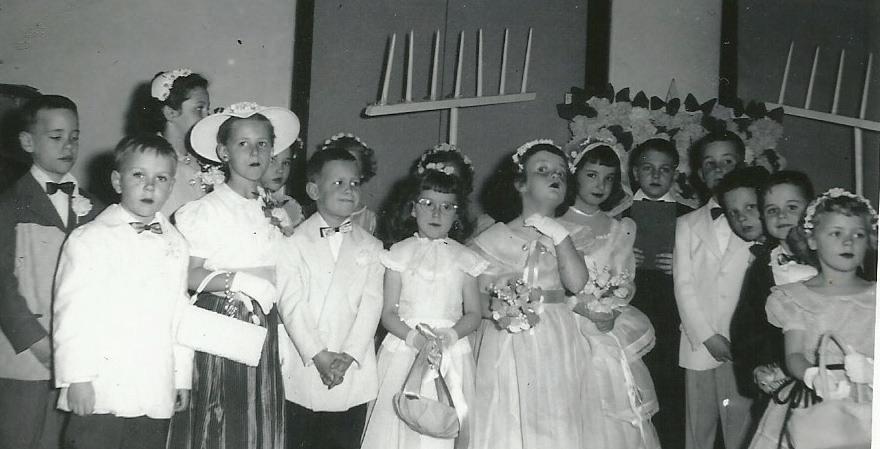
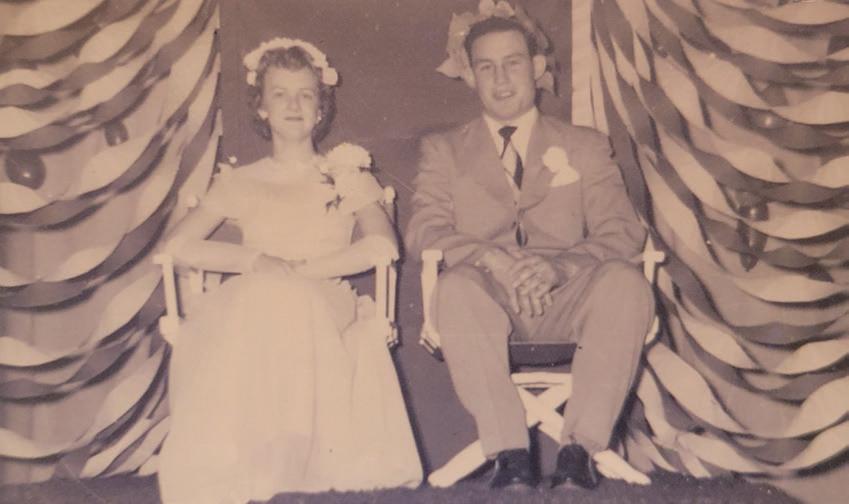
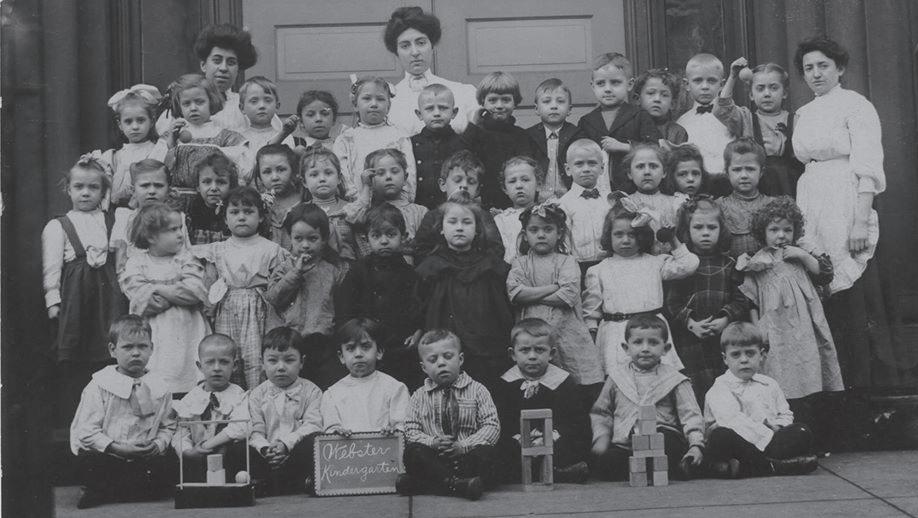


For November, send “Raking leaves” by August 15; for December, send “Holiday baking” by September 15. Upload your photos at www.ohiocoopliving.com/memberinteractive.
June
Name: Electric co-op name: Email address:






*Must
Sponsored by The Ohio State University, Farm Science Review is the largest agricultural event in our region, drawing more than 130,000 people each year. Stop

